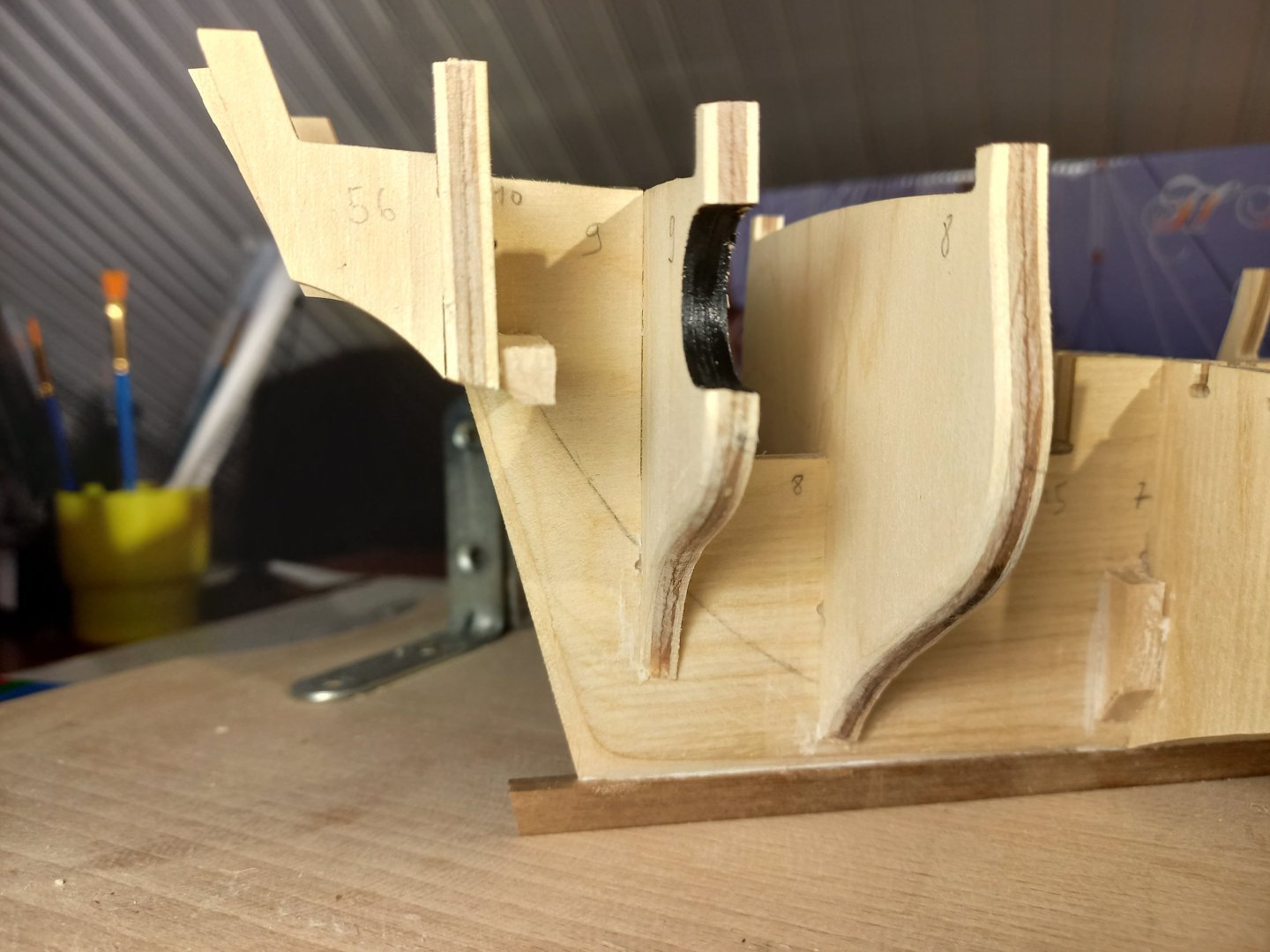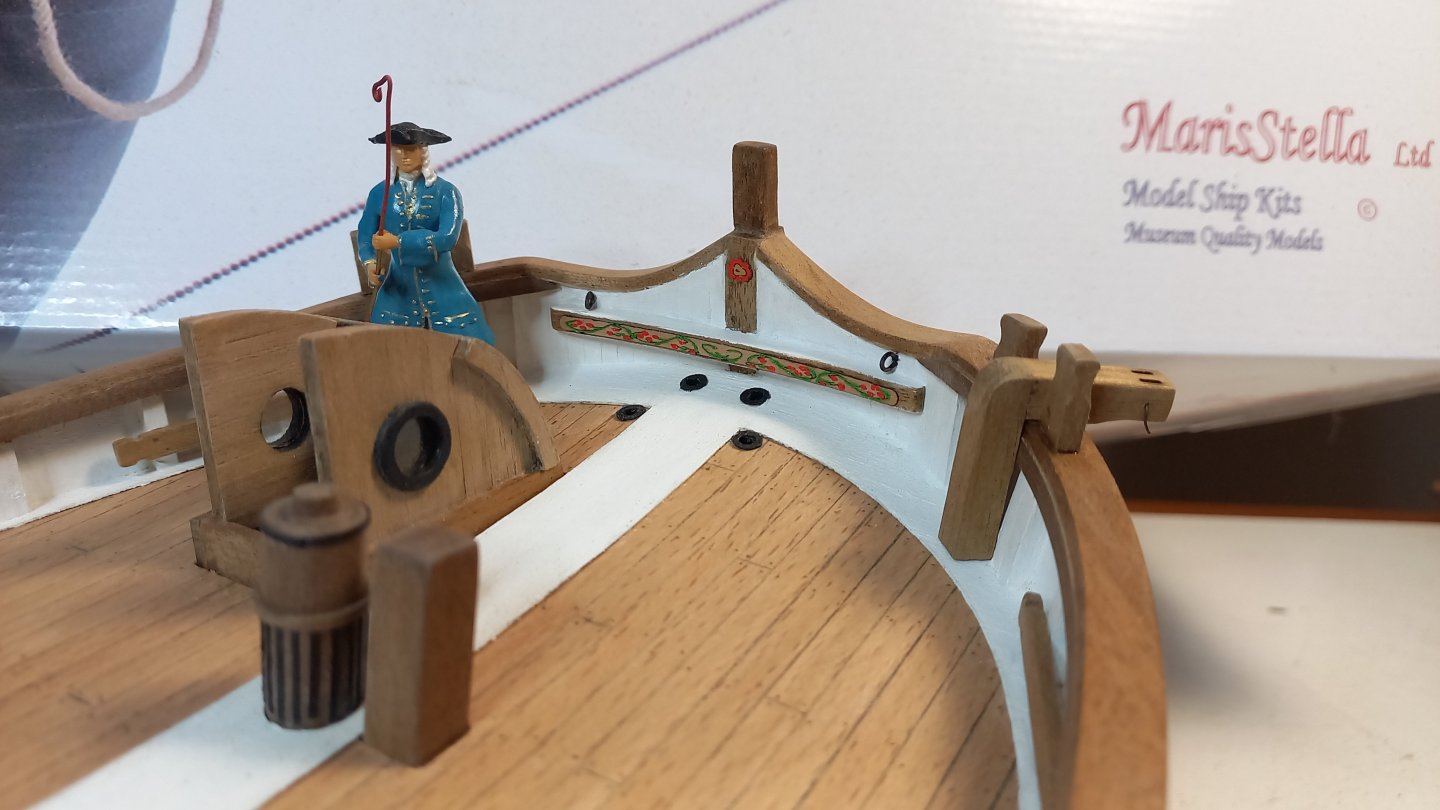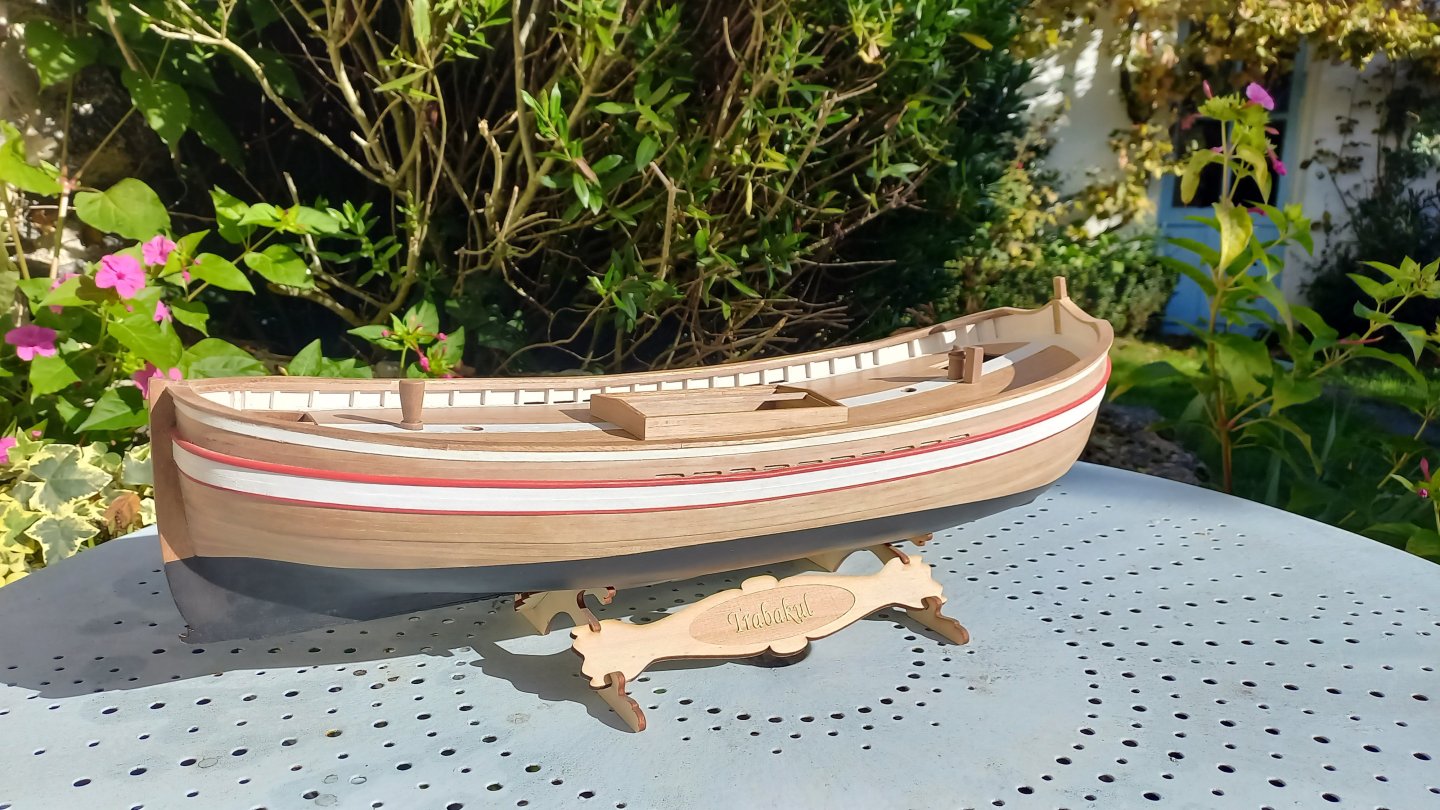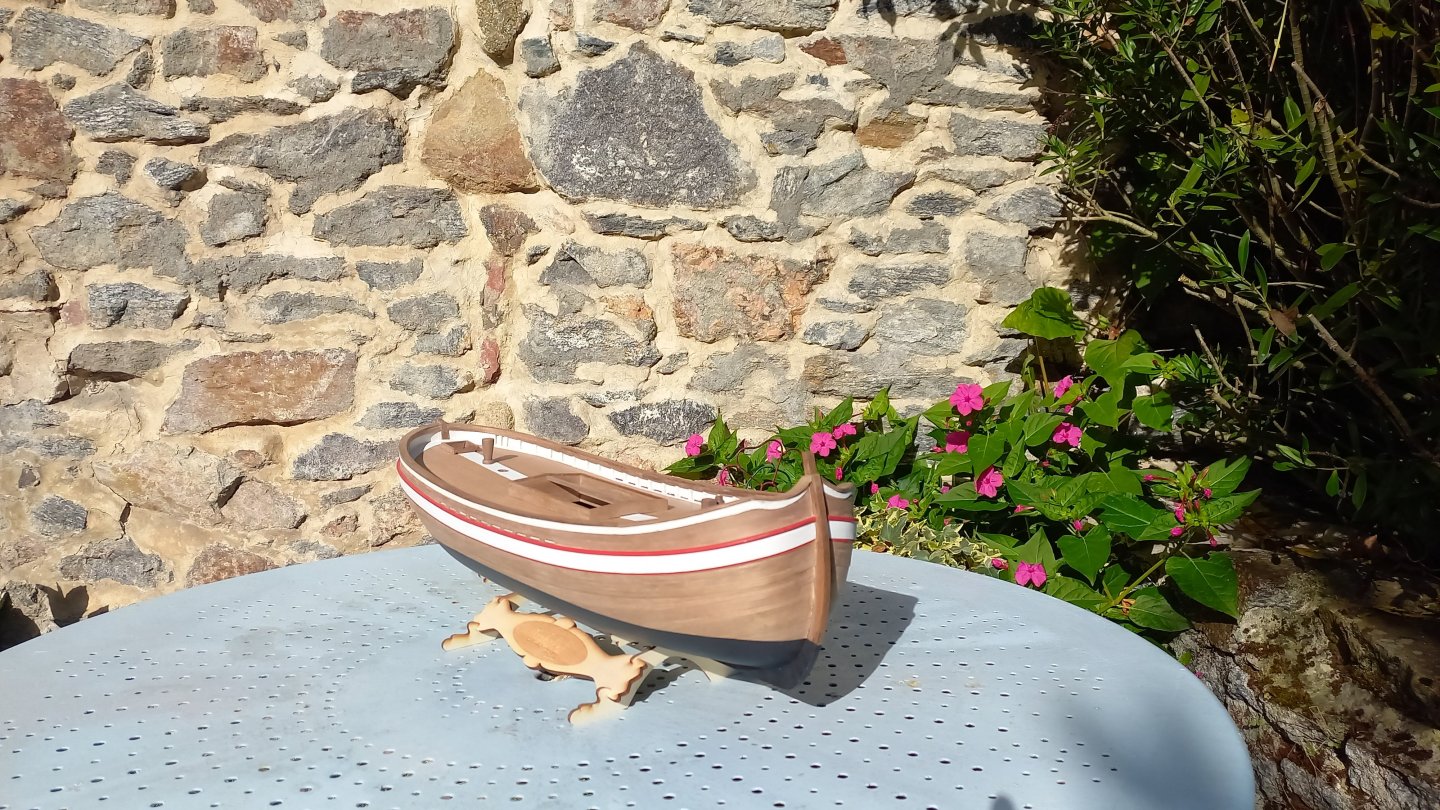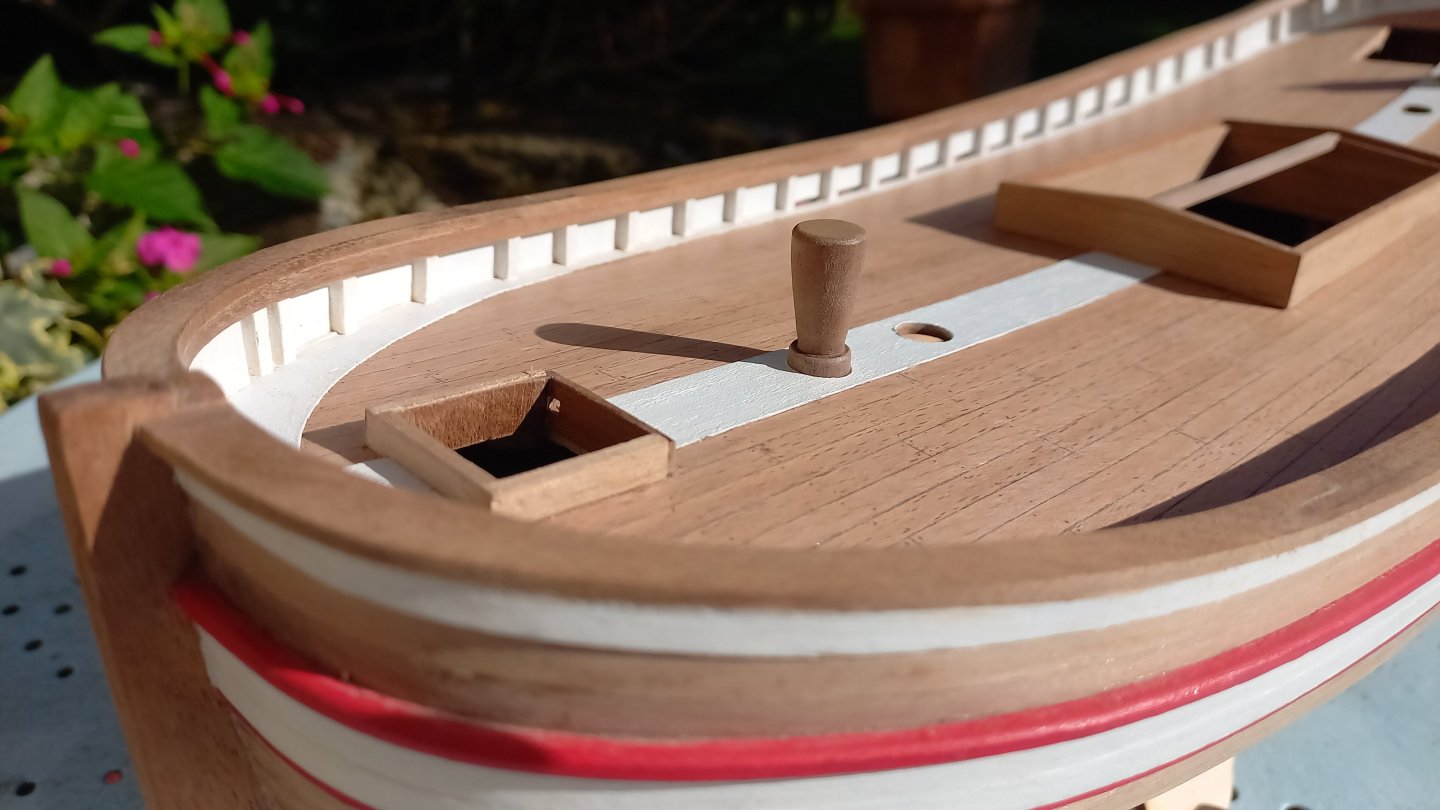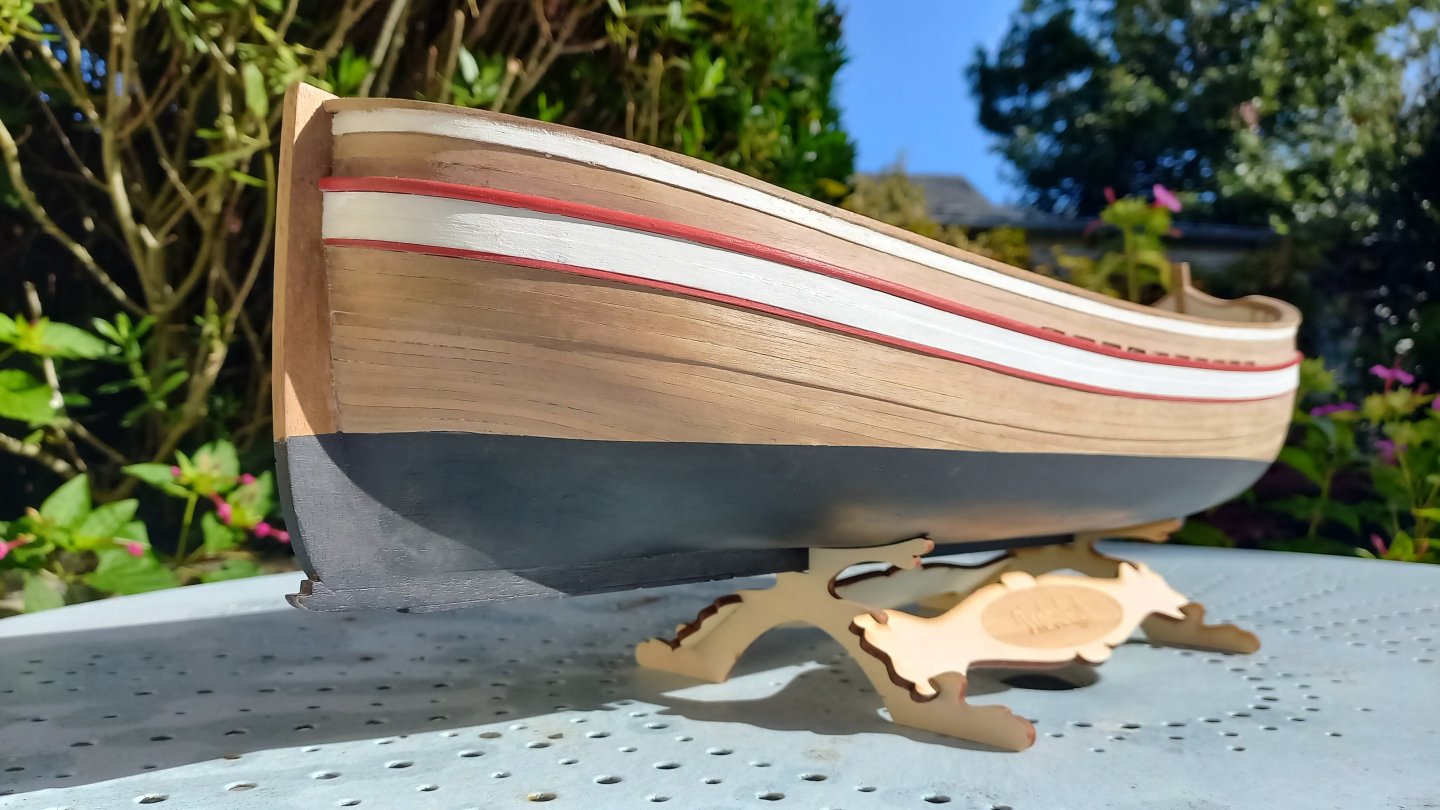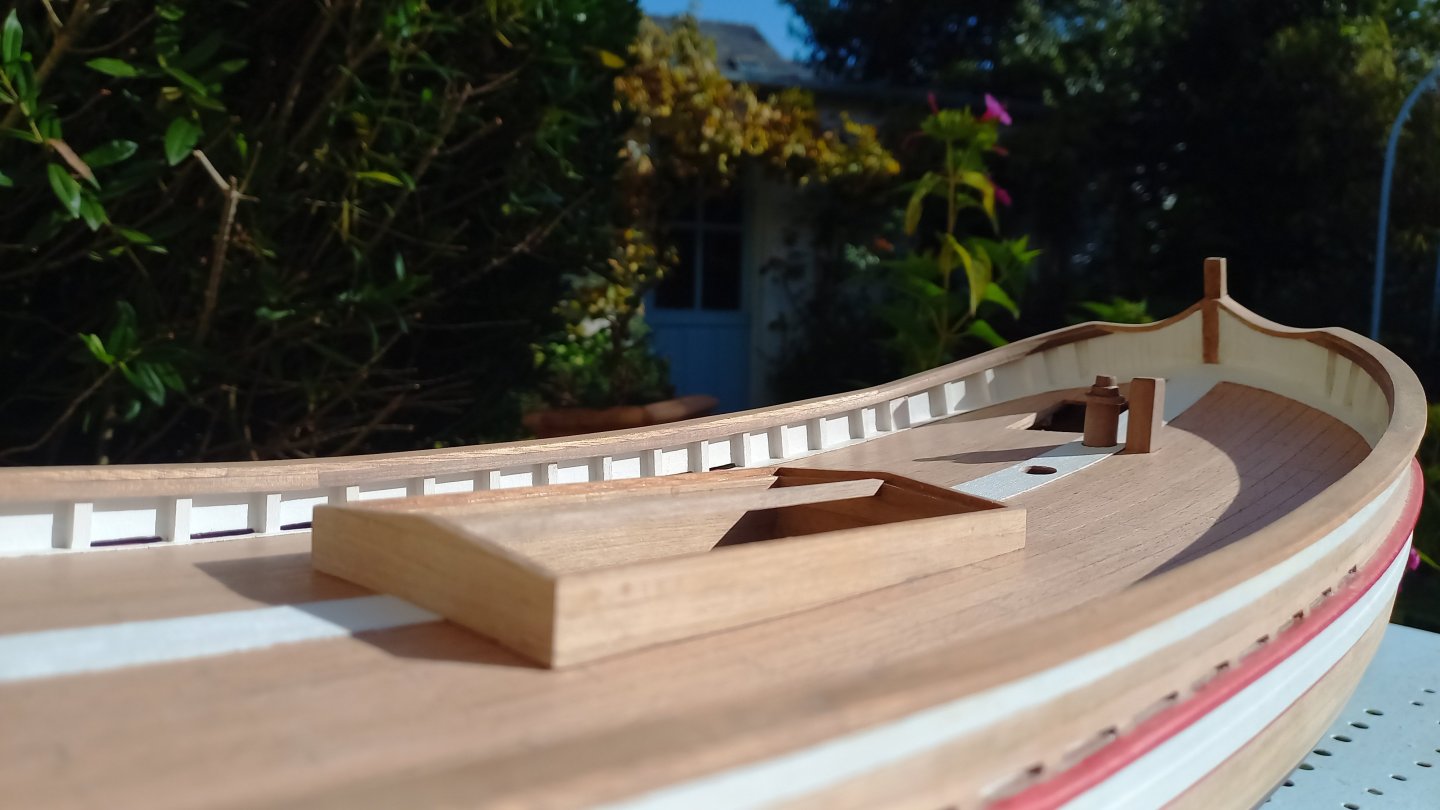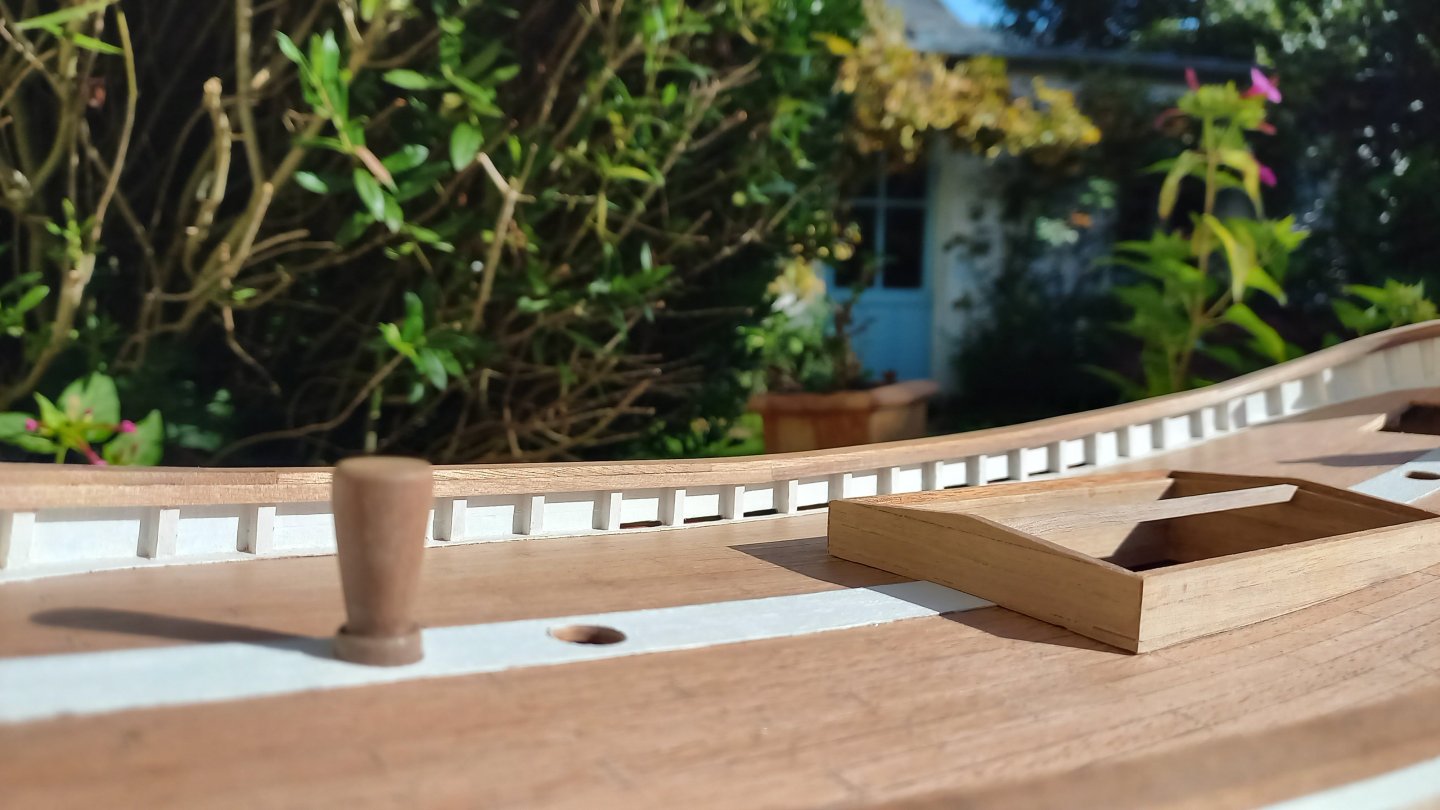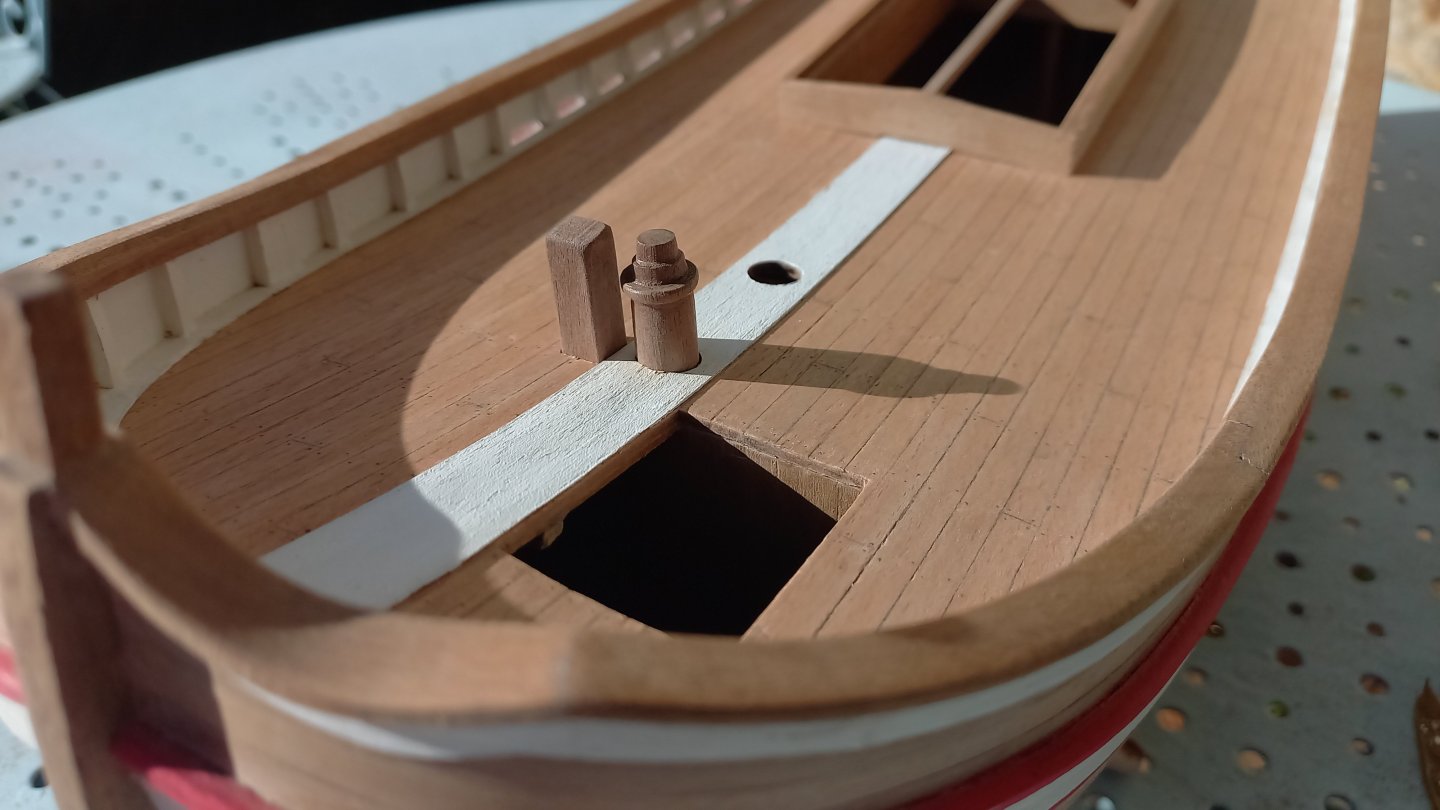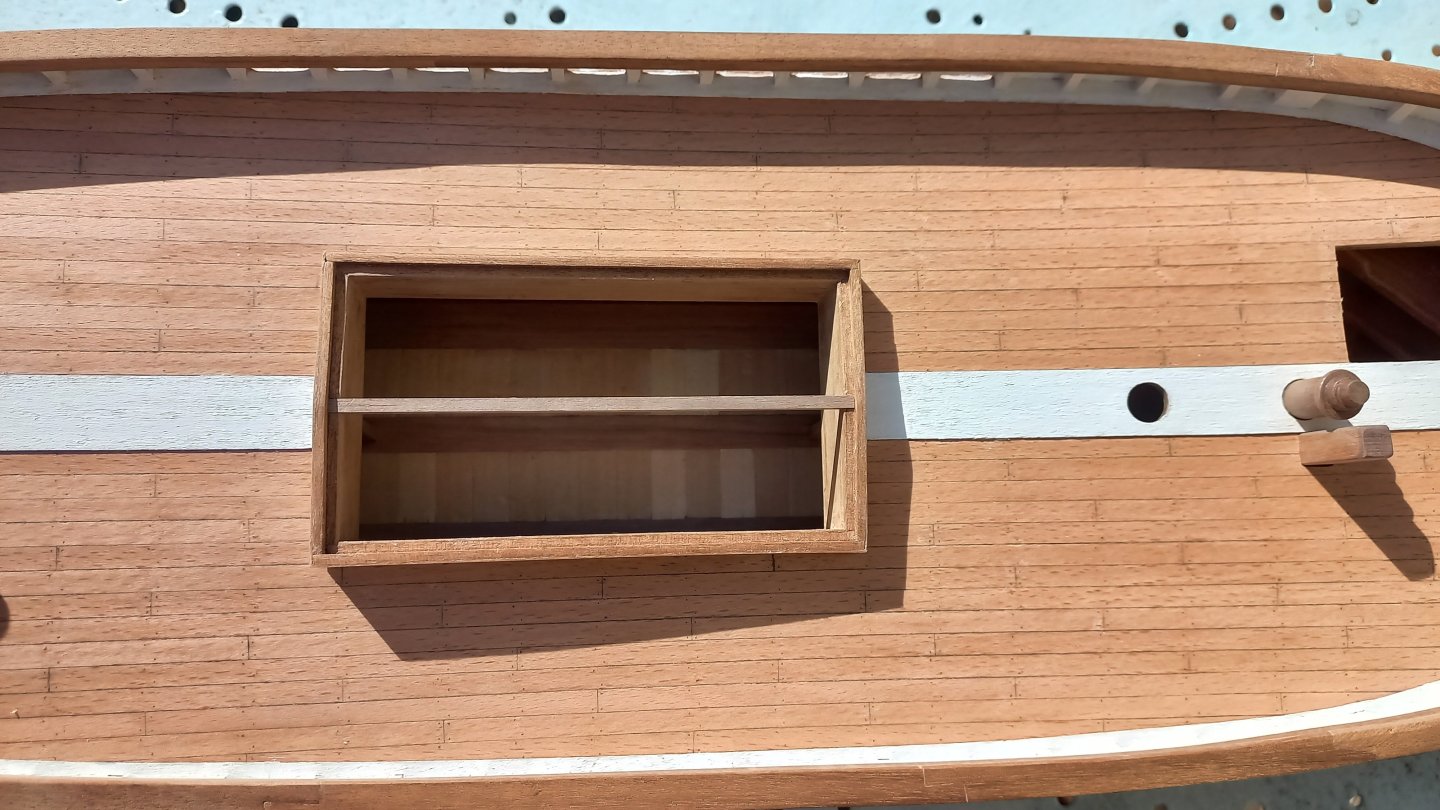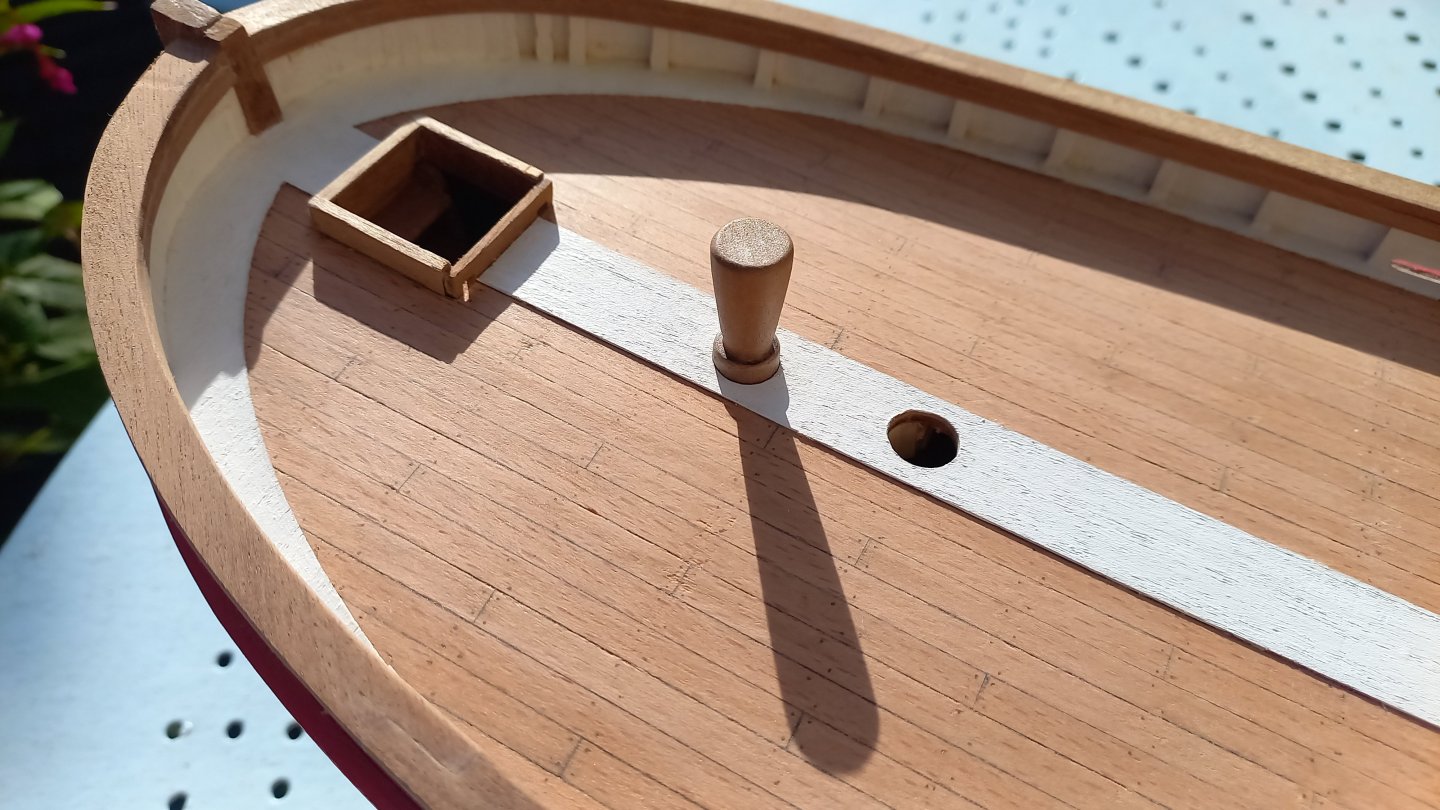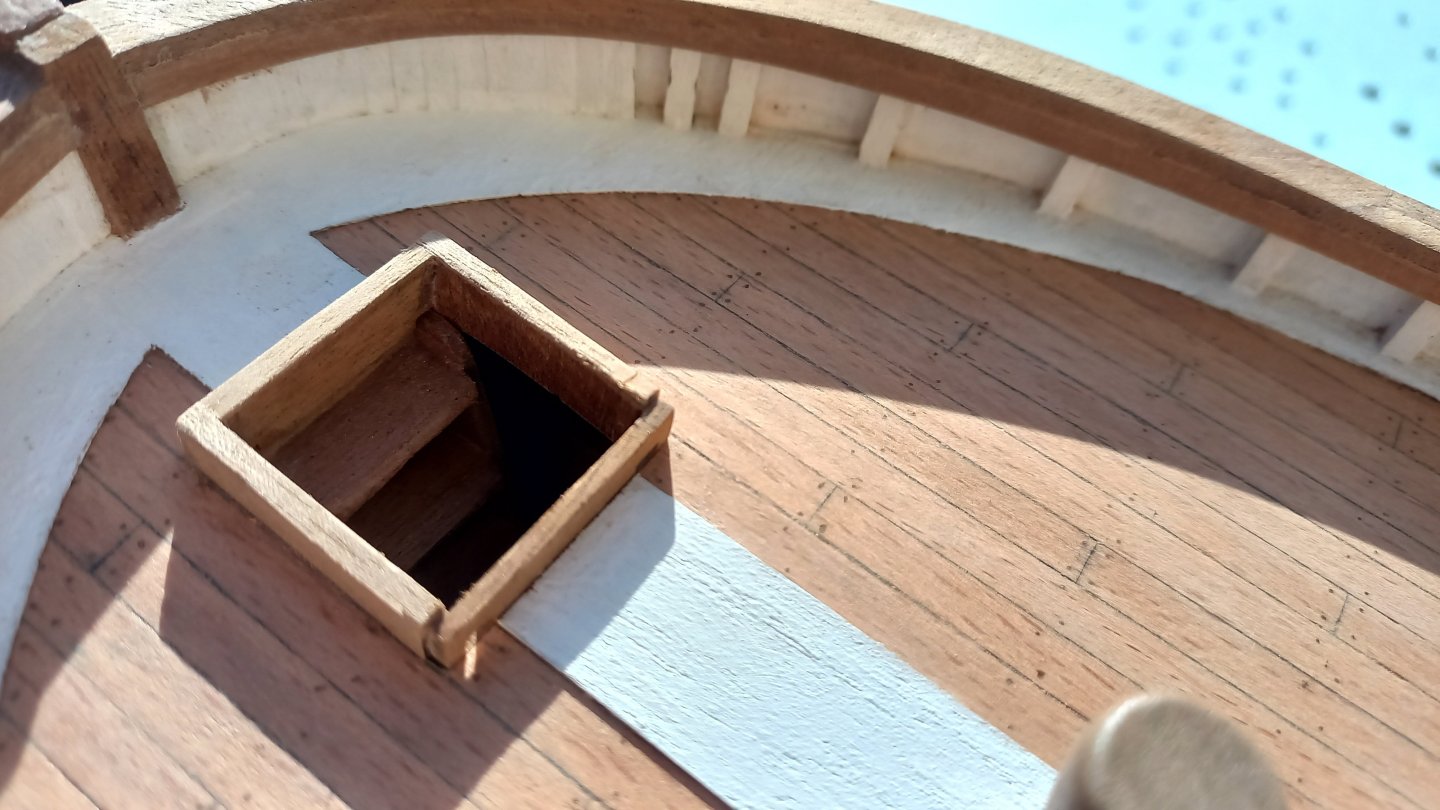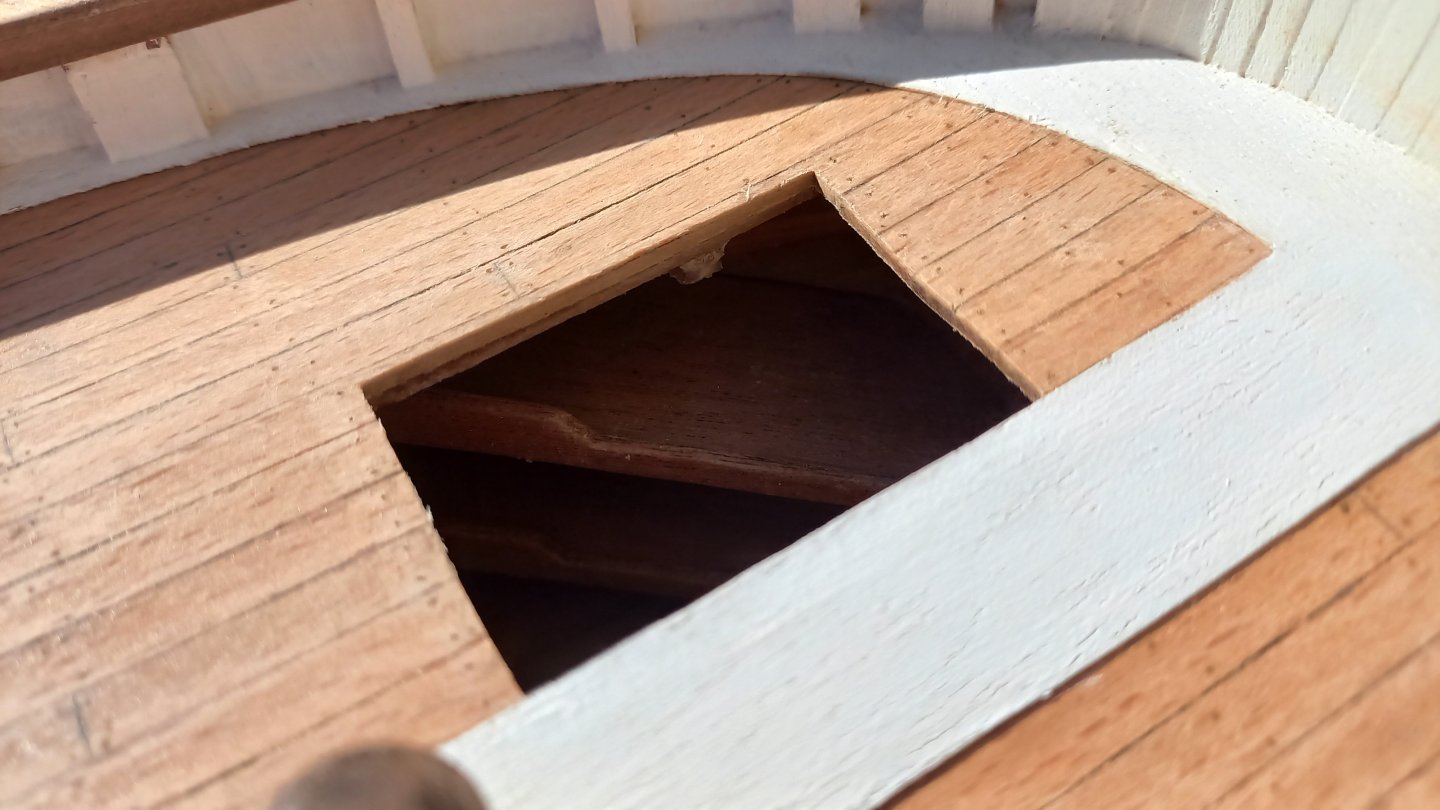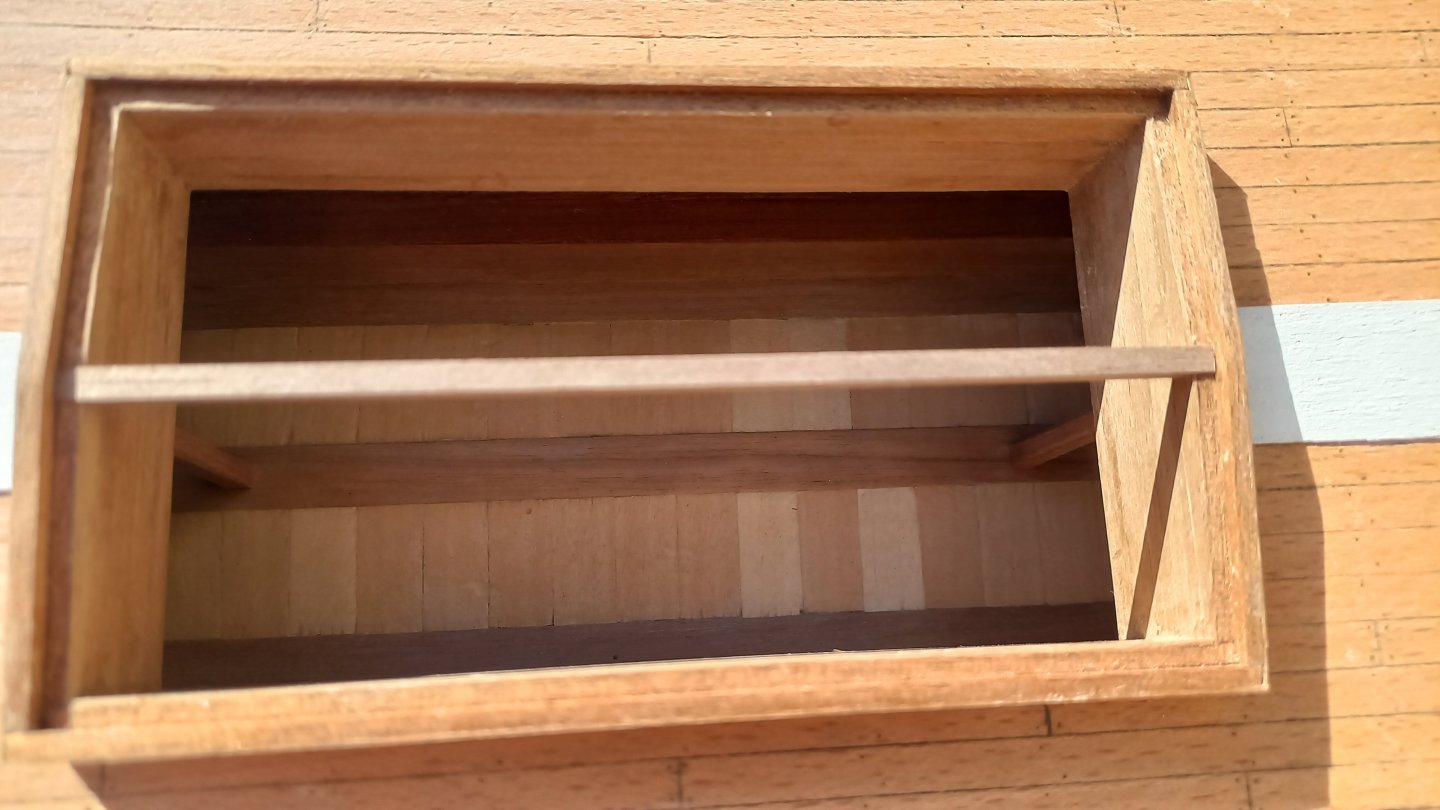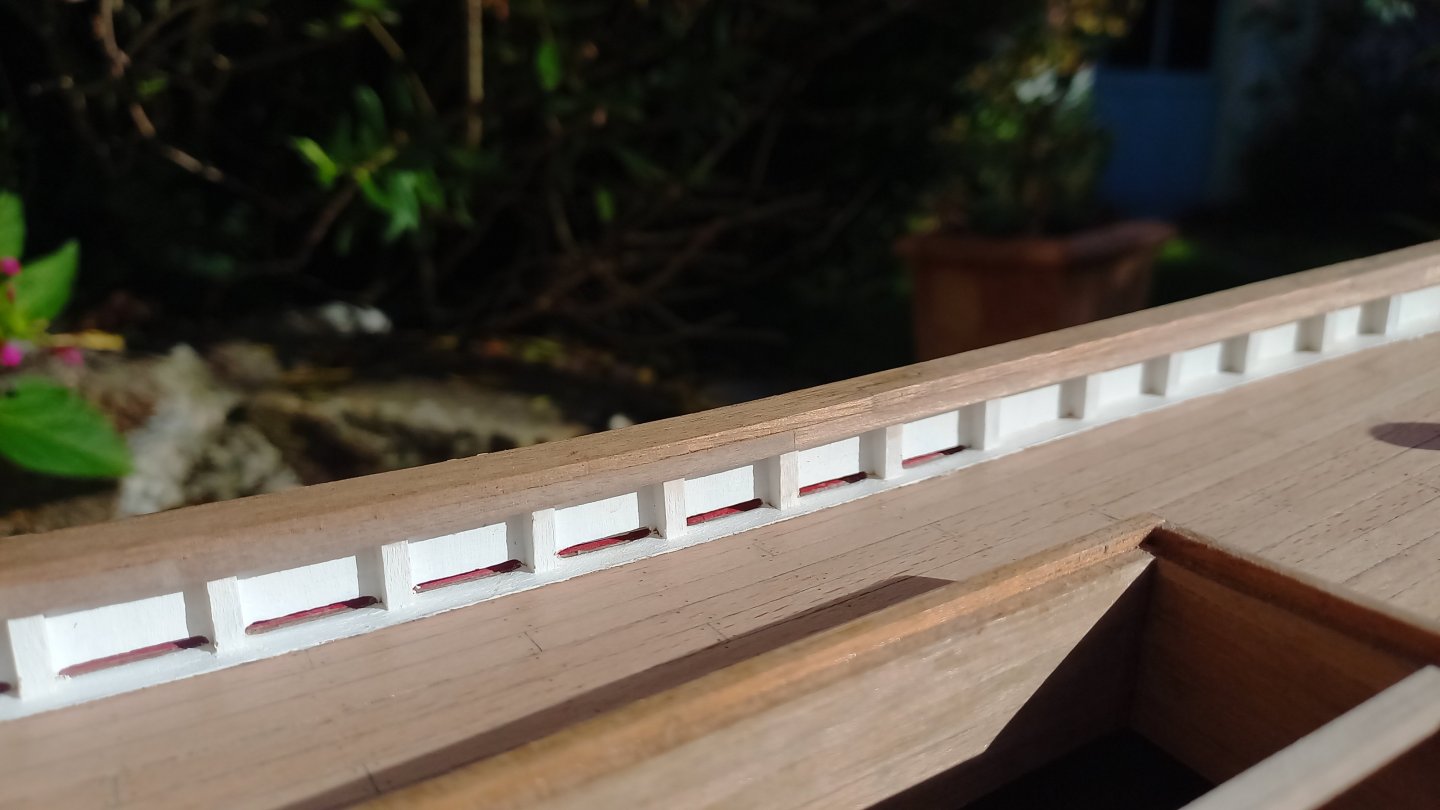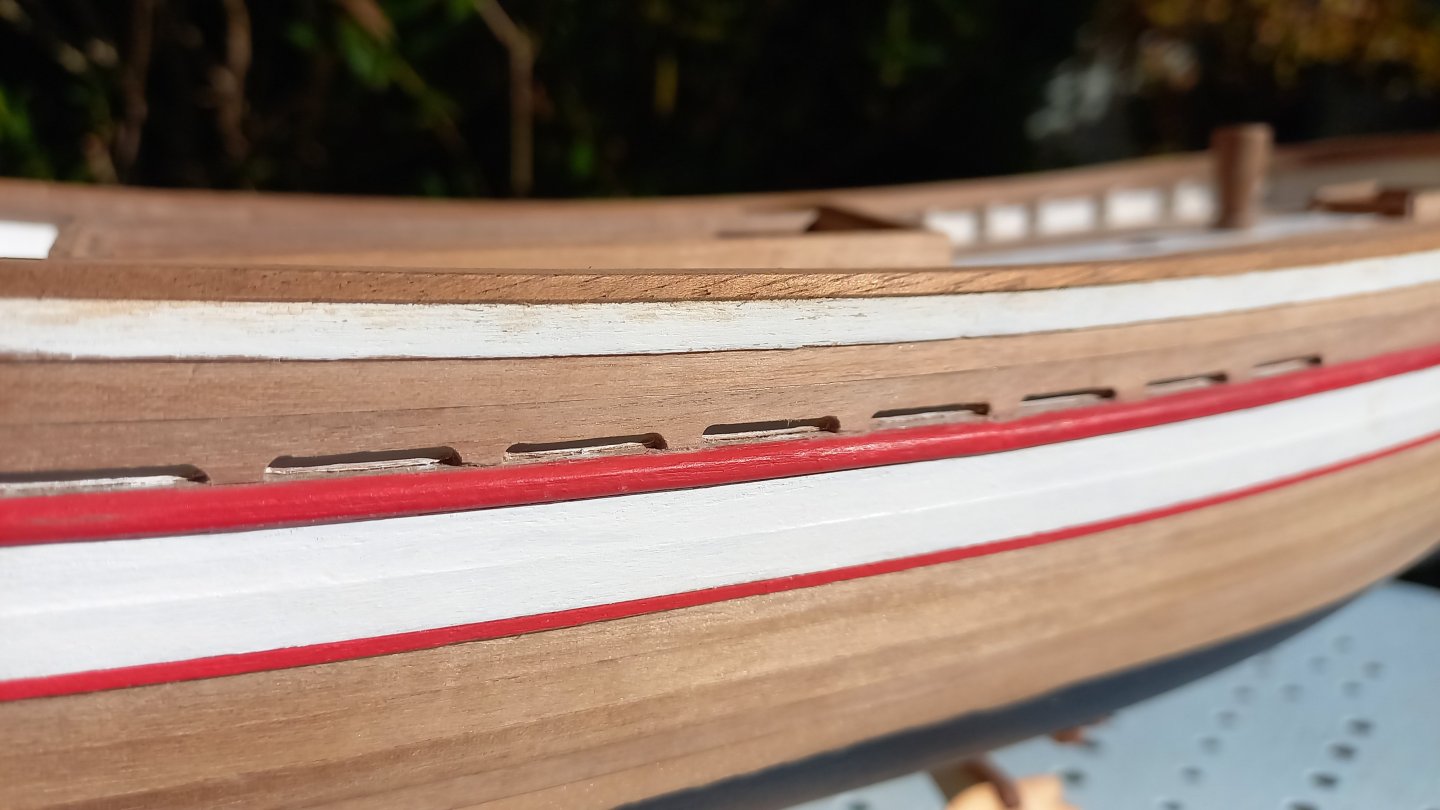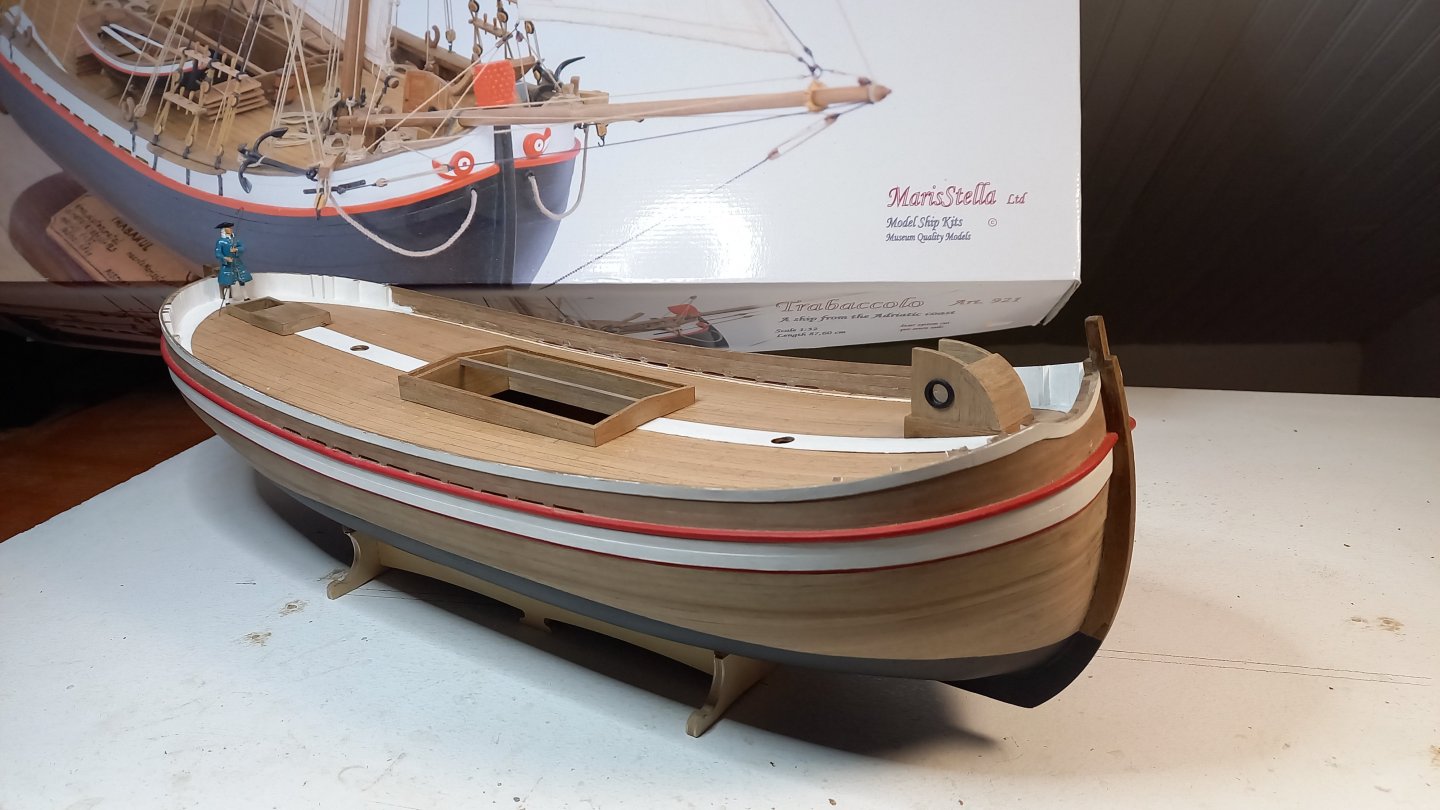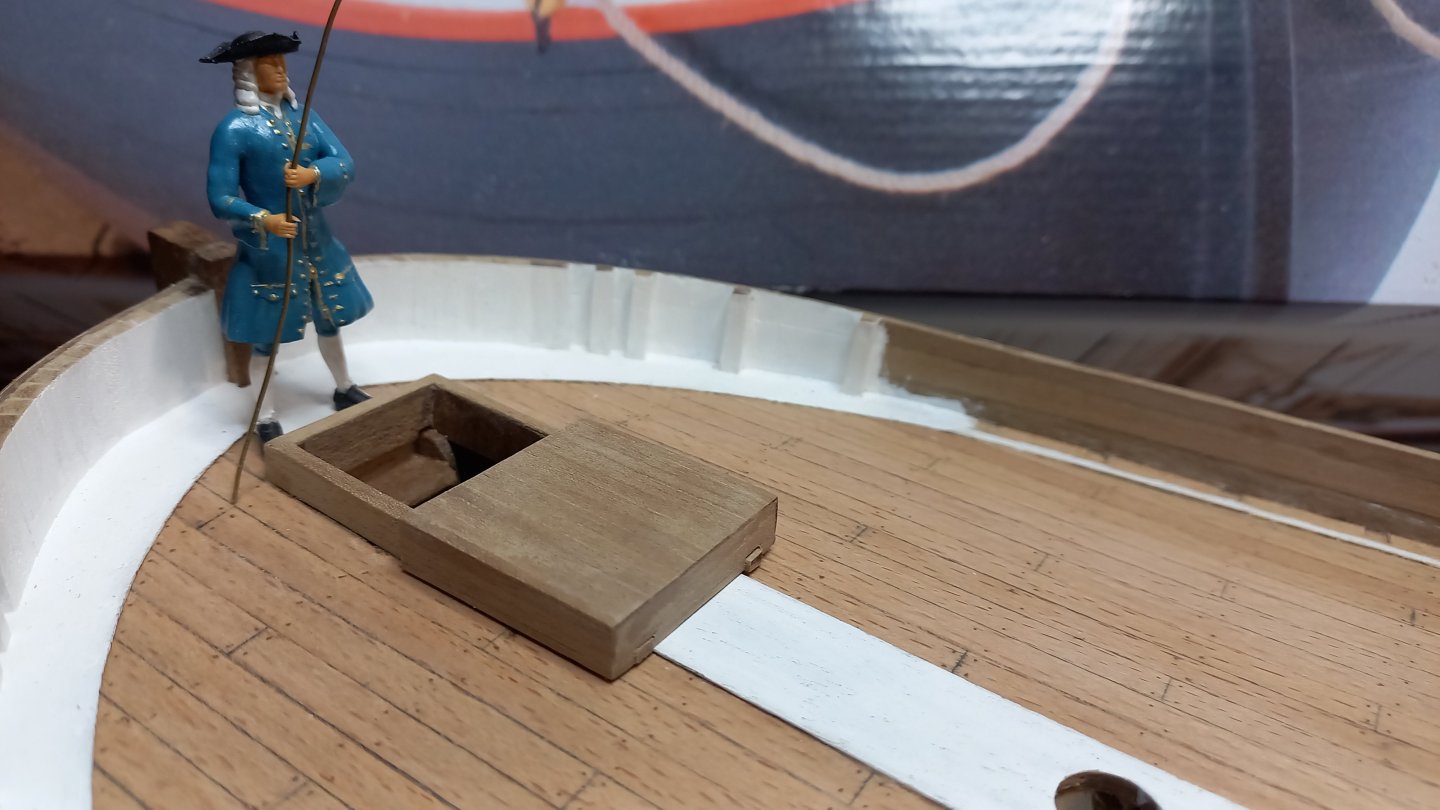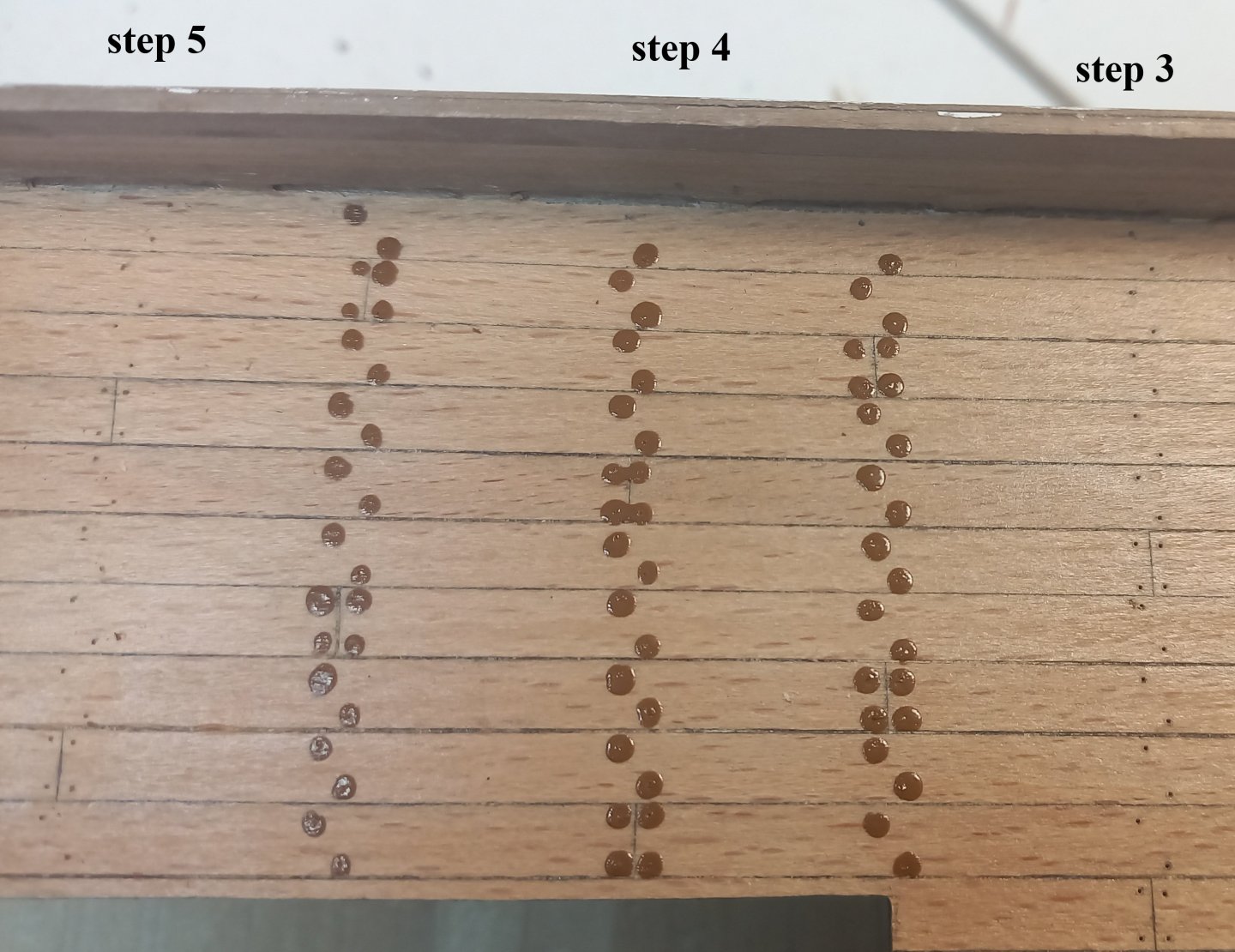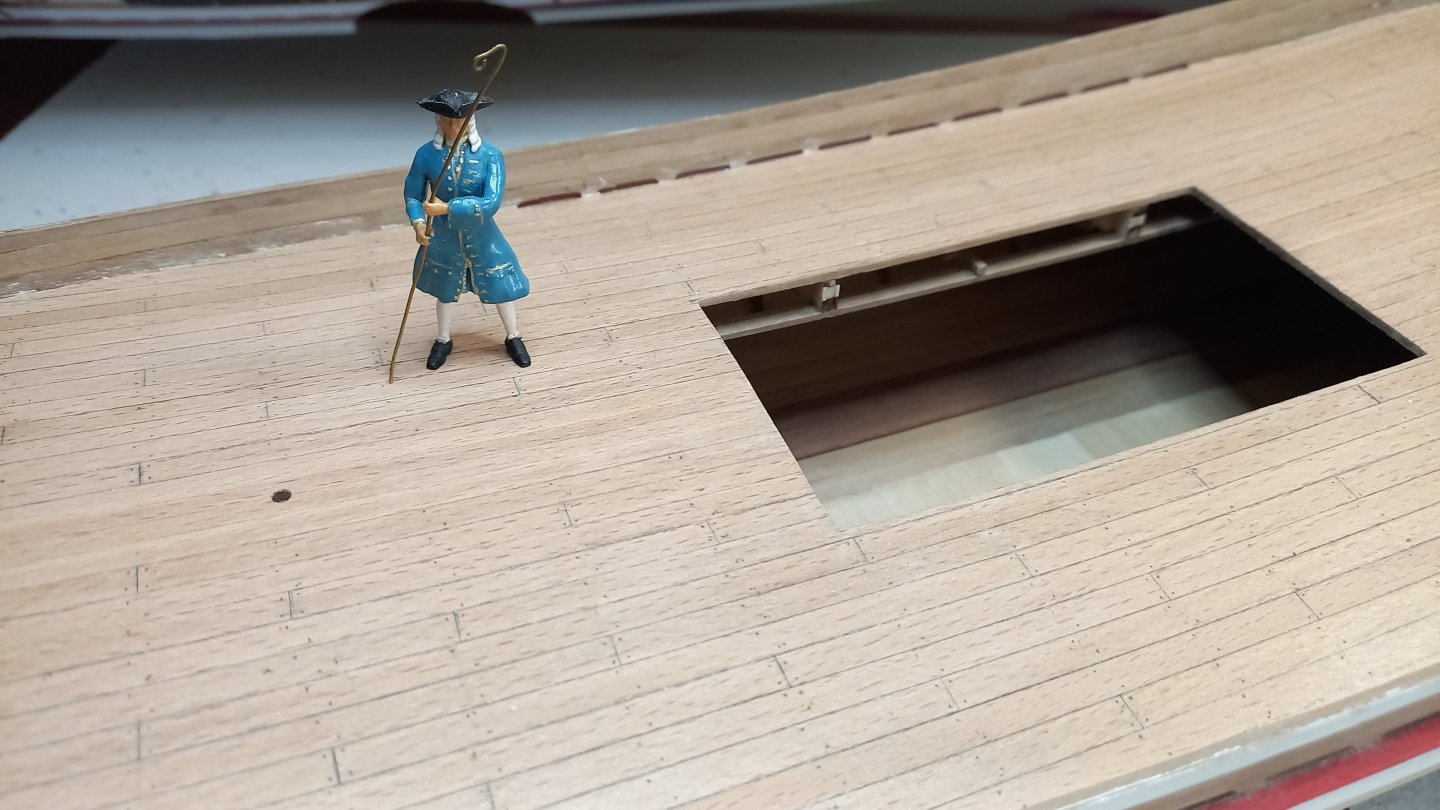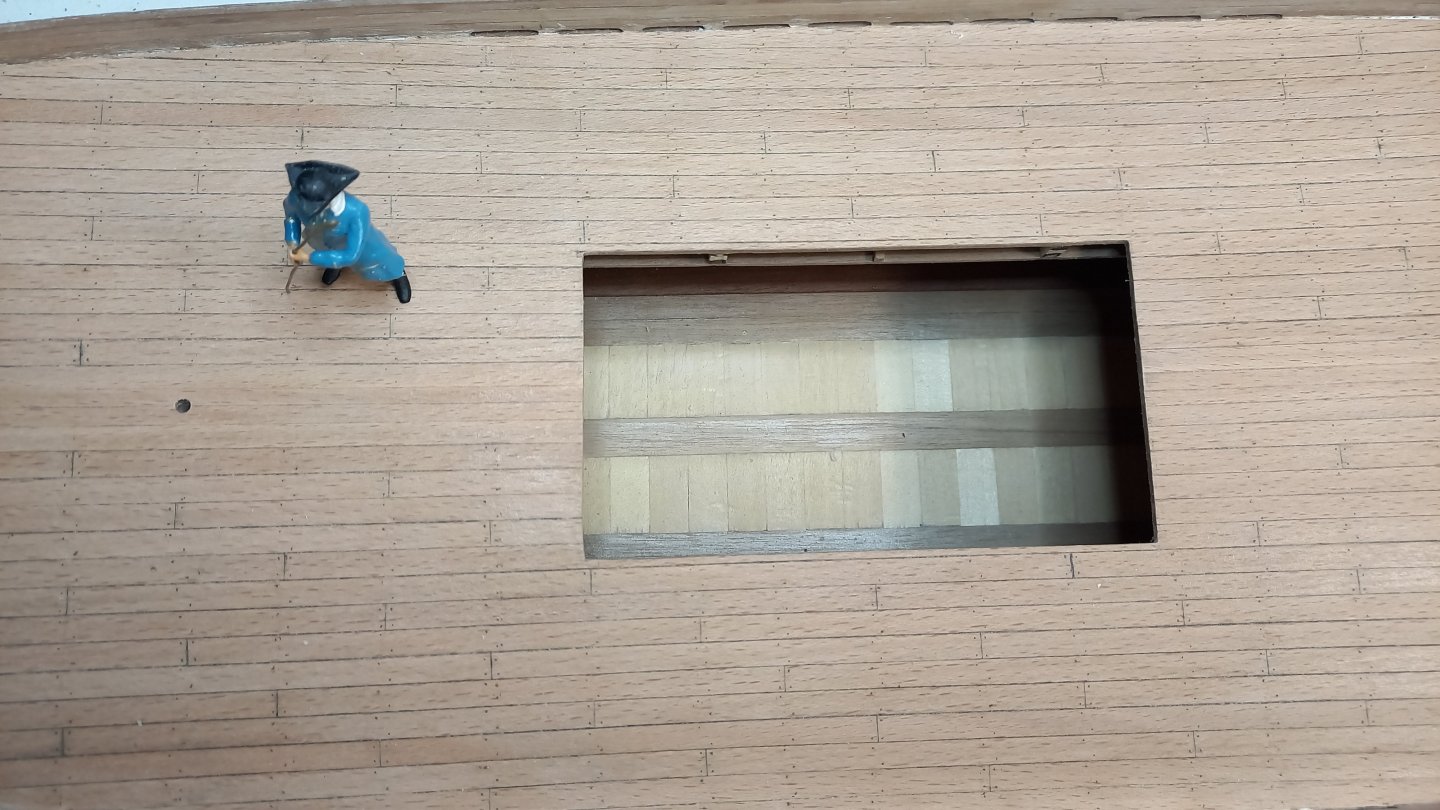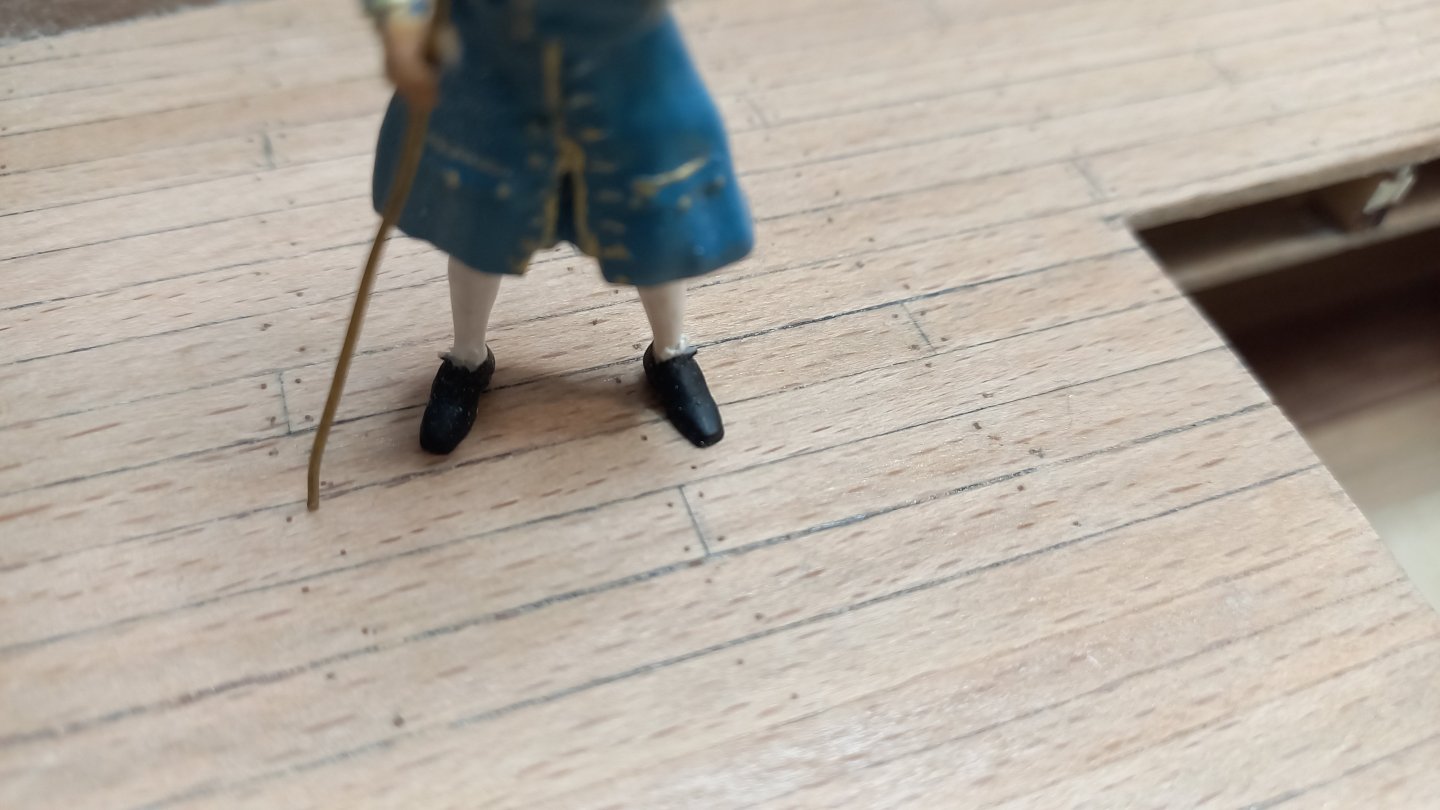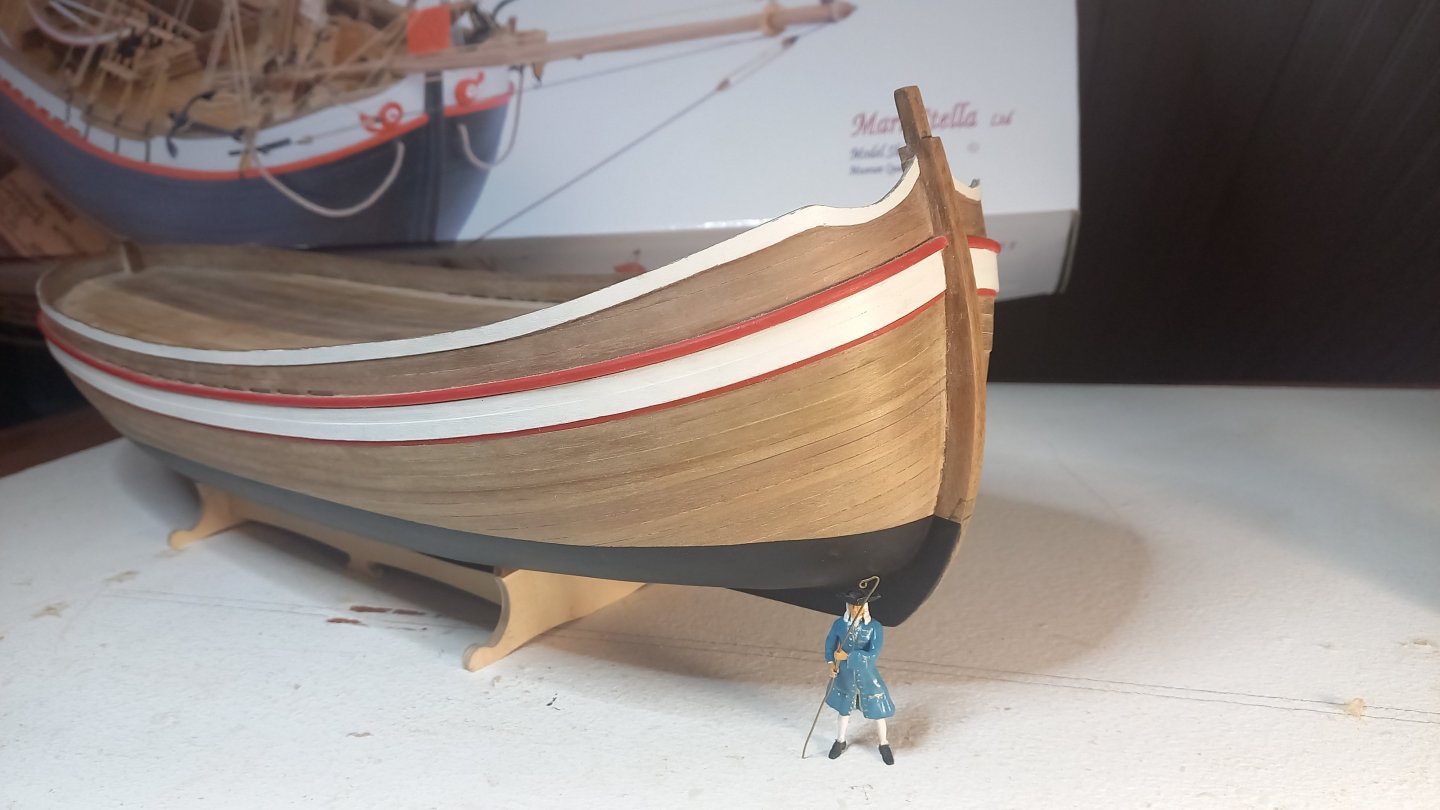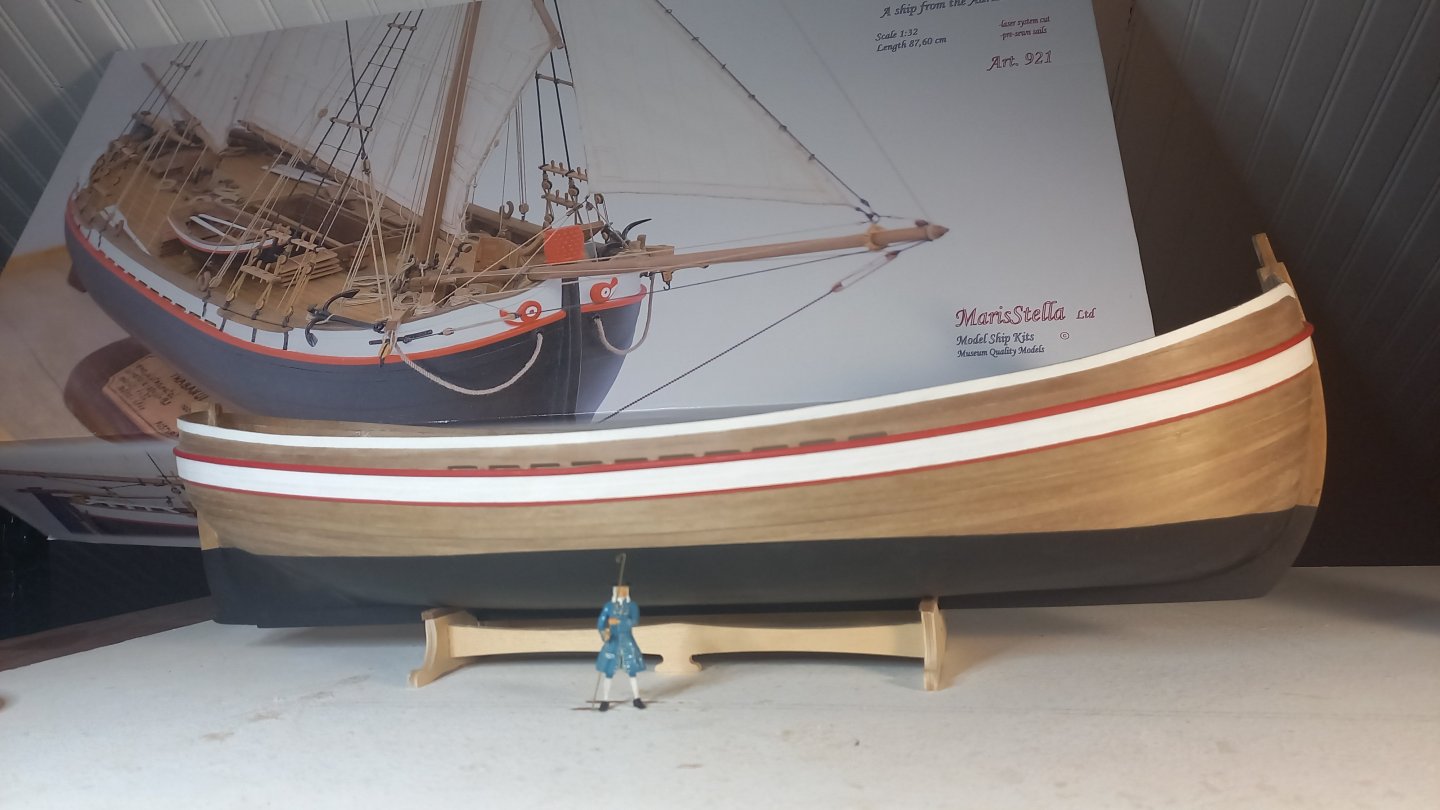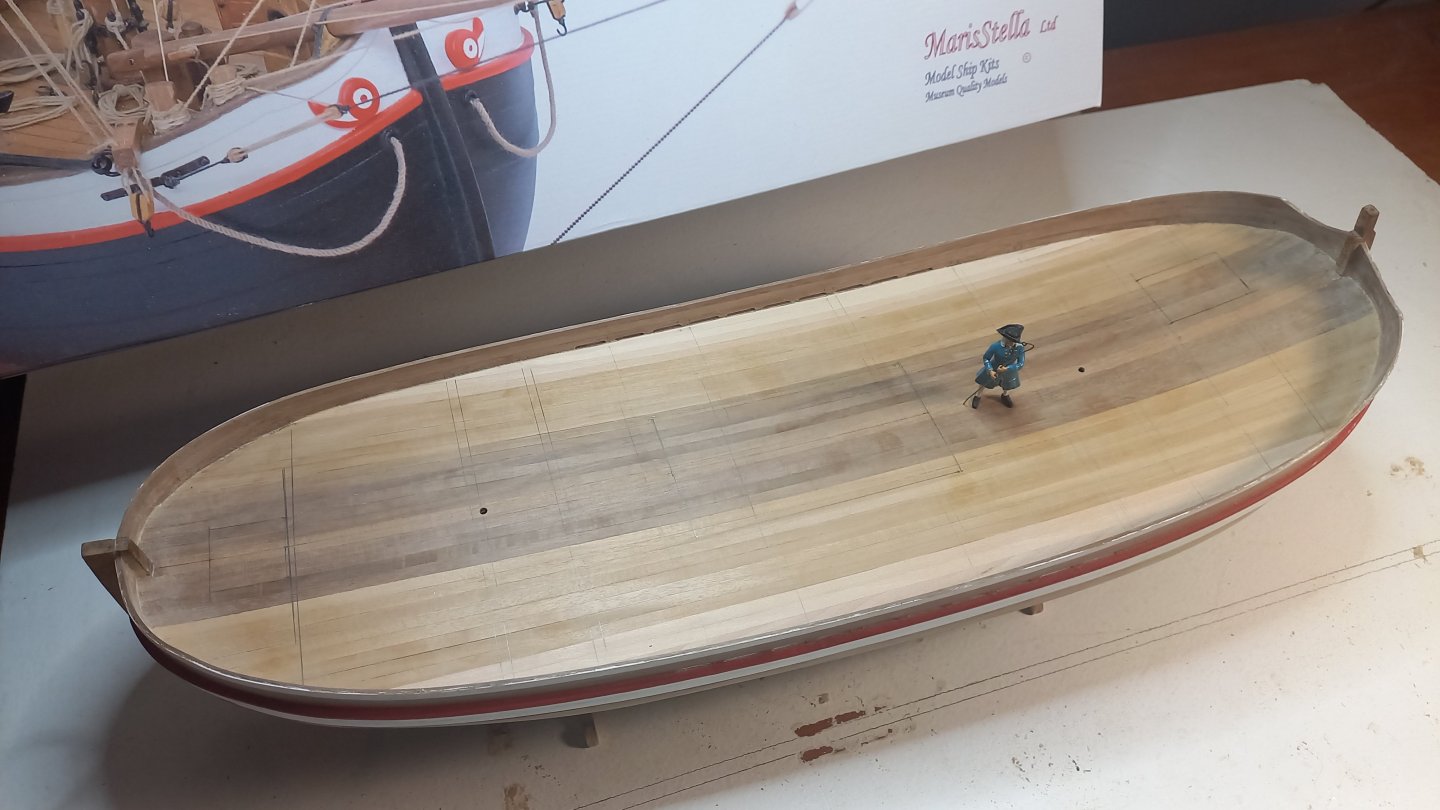-
Posts
201 -
Joined
-
Last visited
Content Type
Profiles
Forums
Gallery
Events
Everything posted by François de Saint Nazaire
-
Bonjour, The trabaccolo traditionally carried a smaller boat, which was sometimes towed behind. However, during long journeys, this boat was usually secured on deck. It was typically lashed to the outboard side of the lanyards with a simple rope, either resting against the shrouds or sometimes placed on a dedicated stand located on the deck. The construction of the ship's boat is divided into three main stages. The first involves creating the mould (or 'jig') for the model's hull and preparing it for planking. The second step is the installation and sanding of the transom and planking the mould with two layers of veneer, followed by the removal of the mould. The third stage consists of fitting the outer keel and performing the final adjustments to the model's hull, both inside and out.
-
Hello, I've finished the deck and all the treenails (around 500). 😅 (I reduce the distance between the line of treenails) For the treenails, I did the following: Applied the wood filler (Fondur in France) Marked the position of each treenail Drilled the holes (0,3mm) . ~10 drill bits to finish ! Filled the holes with a mixture of glue and colorant (sienna) Removed the excess mixture
-
Hello, I'm starting the final planking of the deck. The normal length of a plank is 10 cm (which scales to 320 cm). The kit suggests a beam spacing of 2.5 cm (or 80 cm scale). I've decided to reduce this spacing to 2.0 cm (64 cm scale). Therefore, I'll be simulating the treenails every 2.0 cm instead of 2.5 cm. The second layer is completed using 0.5 x 5mm strips. This layer will also start amidships (in the middle of the deck), but with a key difference: a 17mm wide central strip will be glued on top of it. Therefore, the total width of the first four strips—two on either side of the centerline—must equal 17mm. These thicker planks in the center are called the "corsia." I'm also making sure to avoid using shorter planks (as indicated by the red circles in the drawing extract) and am accounting for openings in the planking.
-
Buona sera! The first deck planking is finished. Sanding has been done to remove hollows and bumps. The deck of the trabaccolo was wide and notably convex, with a thicker plank in the center called the "corsia" , where the mast and bitts were located. The cutting of the hatch panel and access to the living quarters will be done after the final deck planking is installed. I have accurately marked their future locations. The underwater hull is painted with Mars Black acrylic paint.
-
Dear Alistair, I'm glad to hear you're back to continue your Trabakul. In fact, a trabaccolo is a trabakul. 😉 Slovenia is a lovely place. Piran looks like a very nice port. It would be an honor to share your pictures. For the color of the hull, perhaps I will paint the bottom black. Have a nice day François
-
Hello Glen, I prefer the second one; it's a difficult choice. In the second one, the stone opens up the field because there's no border. I'm not sure if I'm being clear, but either way, it's beautiful! 🤔
- 106 replies
-
- Kentoshi-Sen
- bottle
-
(and 1 more)
Tagged with:
-
Greetings from the UK
François de Saint Nazaire replied to Mashuno's topic in New member Introductions
"Soit le Bienvenu" Student
About us
Modelshipworld - Advancing Ship Modeling through Research
SSL Secured
Your security is important for us so this Website is SSL-Secured
NRG Mailing Address
Nautical Research Guild
237 South Lincoln Street
Westmont IL, 60559-1917
Model Ship World ® and the MSW logo are Registered Trademarks, and belong to the Nautical Research Guild (United States Patent and Trademark Office: No. 6,929,264 & No. 6,929,274, registered Dec. 20, 2022)
Helpful Links
About the NRG
If you enjoy building ship models that are historically accurate as well as beautiful, then The Nautical Research Guild (NRG) is just right for you.
The Guild is a non-profit educational organization whose mission is to “Advance Ship Modeling Through Research”. We provide support to our members in their efforts to raise the quality of their model ships.
The Nautical Research Guild has published our world-renowned quarterly magazine, The Nautical Research Journal, since 1955. The pages of the Journal are full of articles by accomplished ship modelers who show you how they create those exquisite details on their models, and by maritime historians who show you the correct details to build. The Journal is available in both print and digital editions. Go to the NRG web site (www.thenrg.org) to download a complimentary digital copy of the Journal. The NRG also publishes plan sets, books and compilations of back issues of the Journal and the former Ships in Scale and Model Ship Builder magazines.

.jpg.c334ea1d4cfb12b6b3e2eb949f8f8dea.jpg)

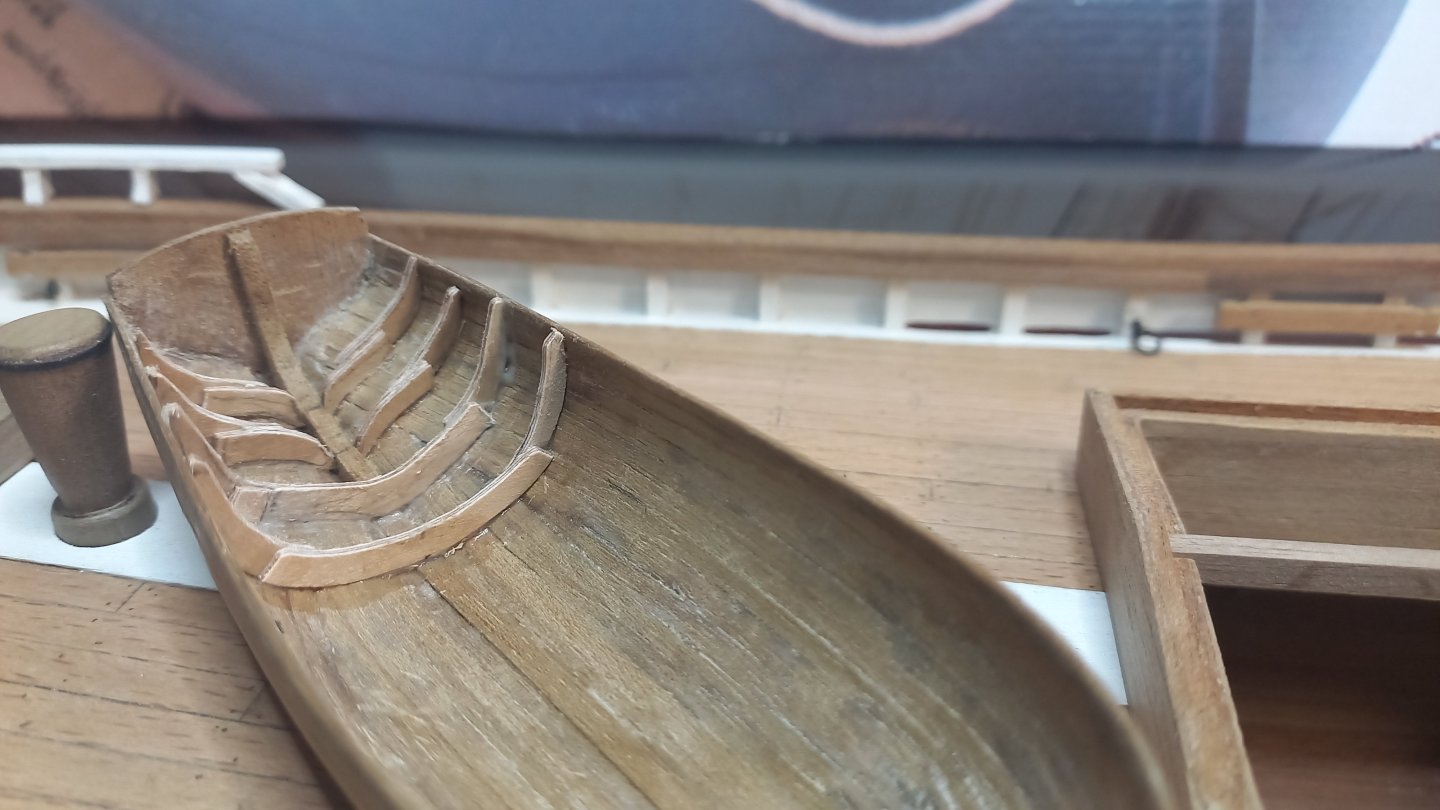
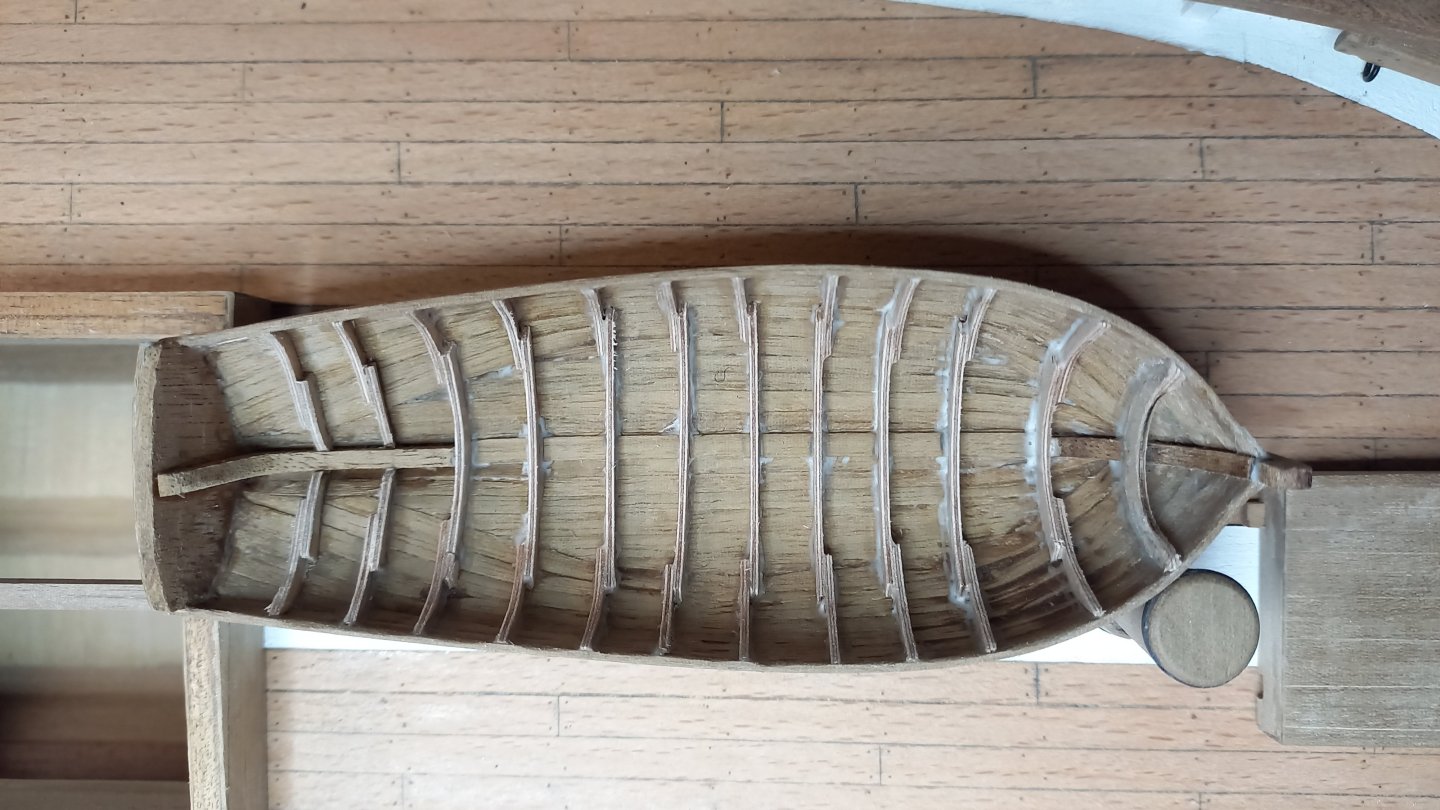
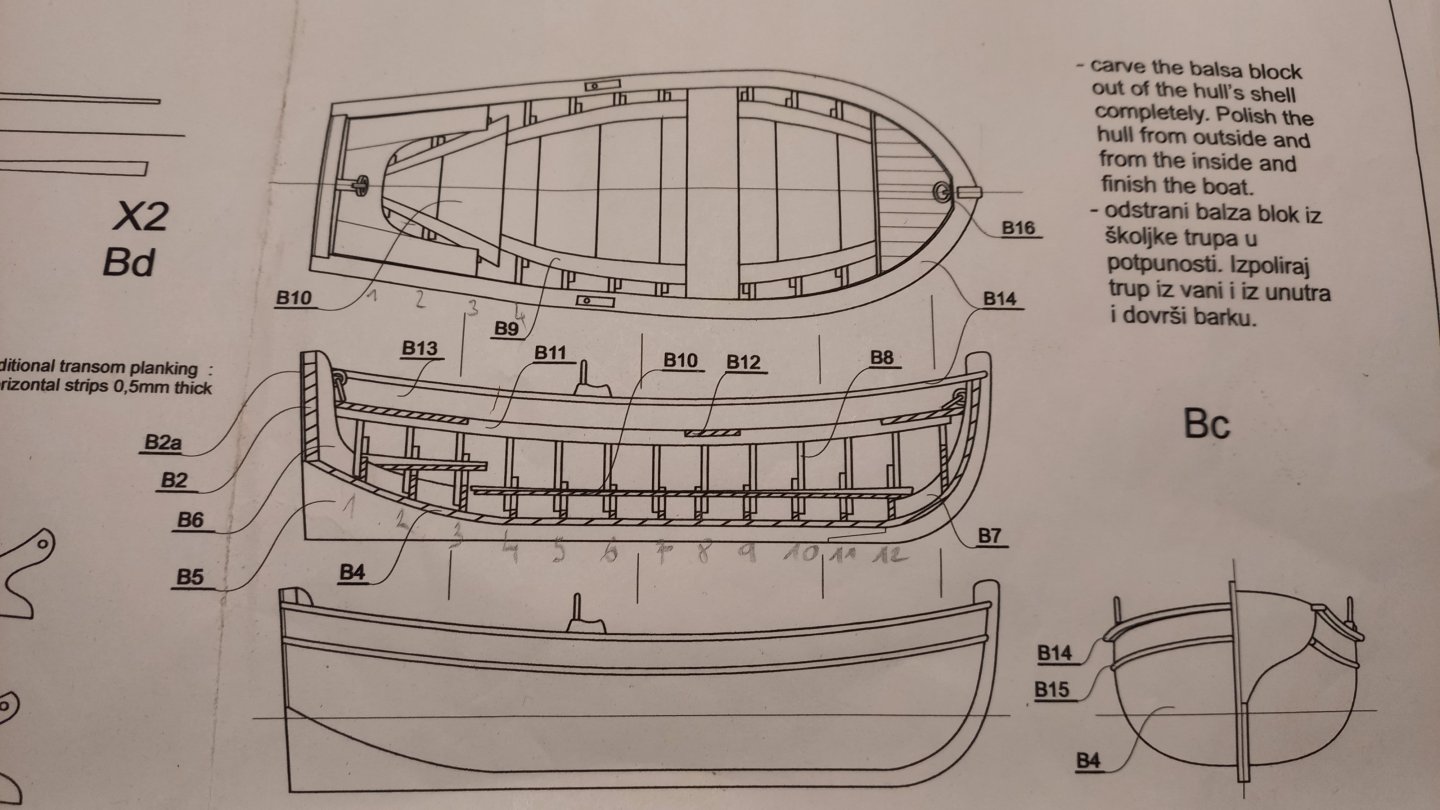
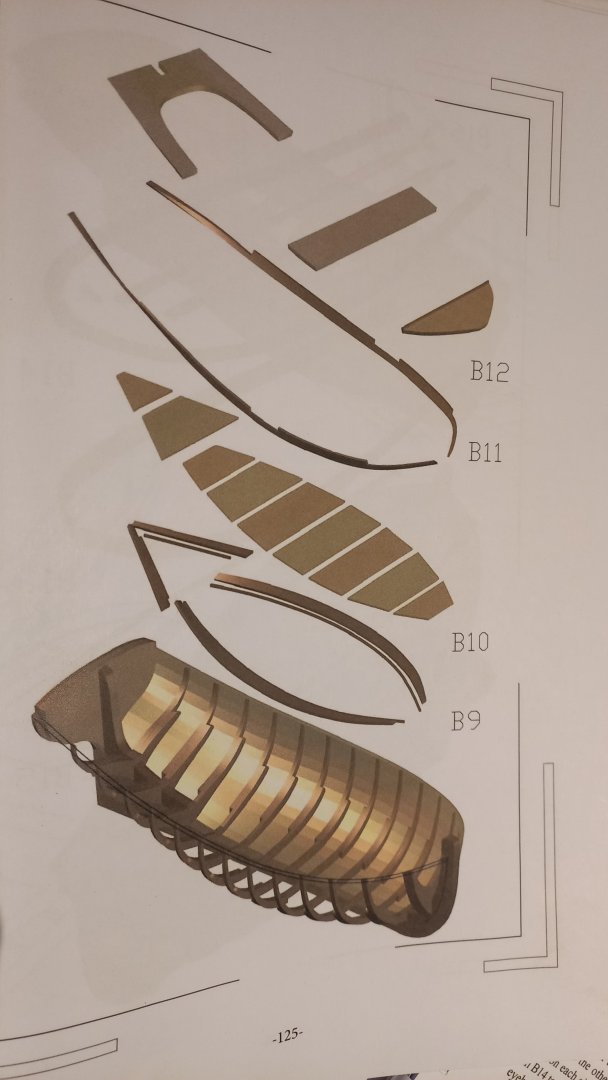
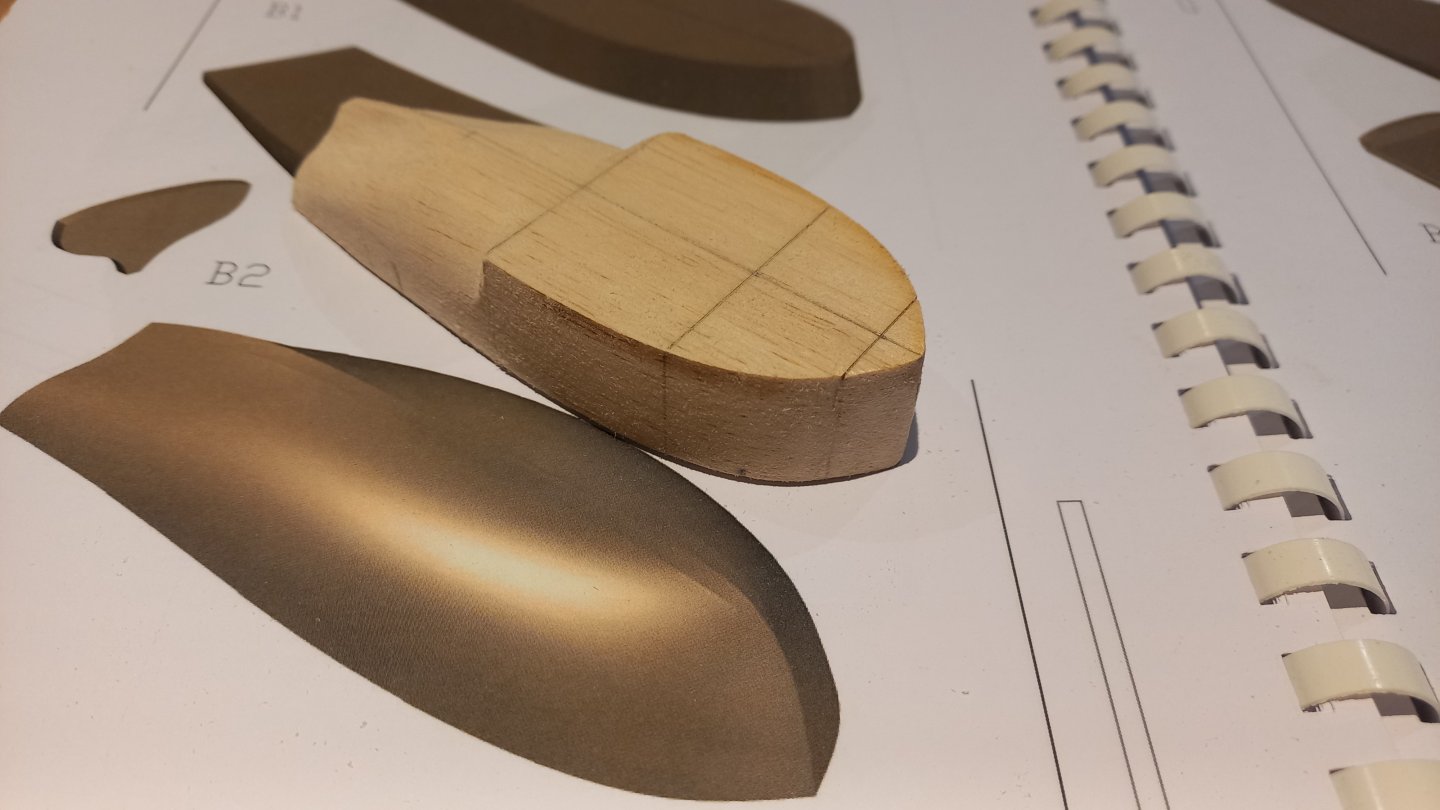





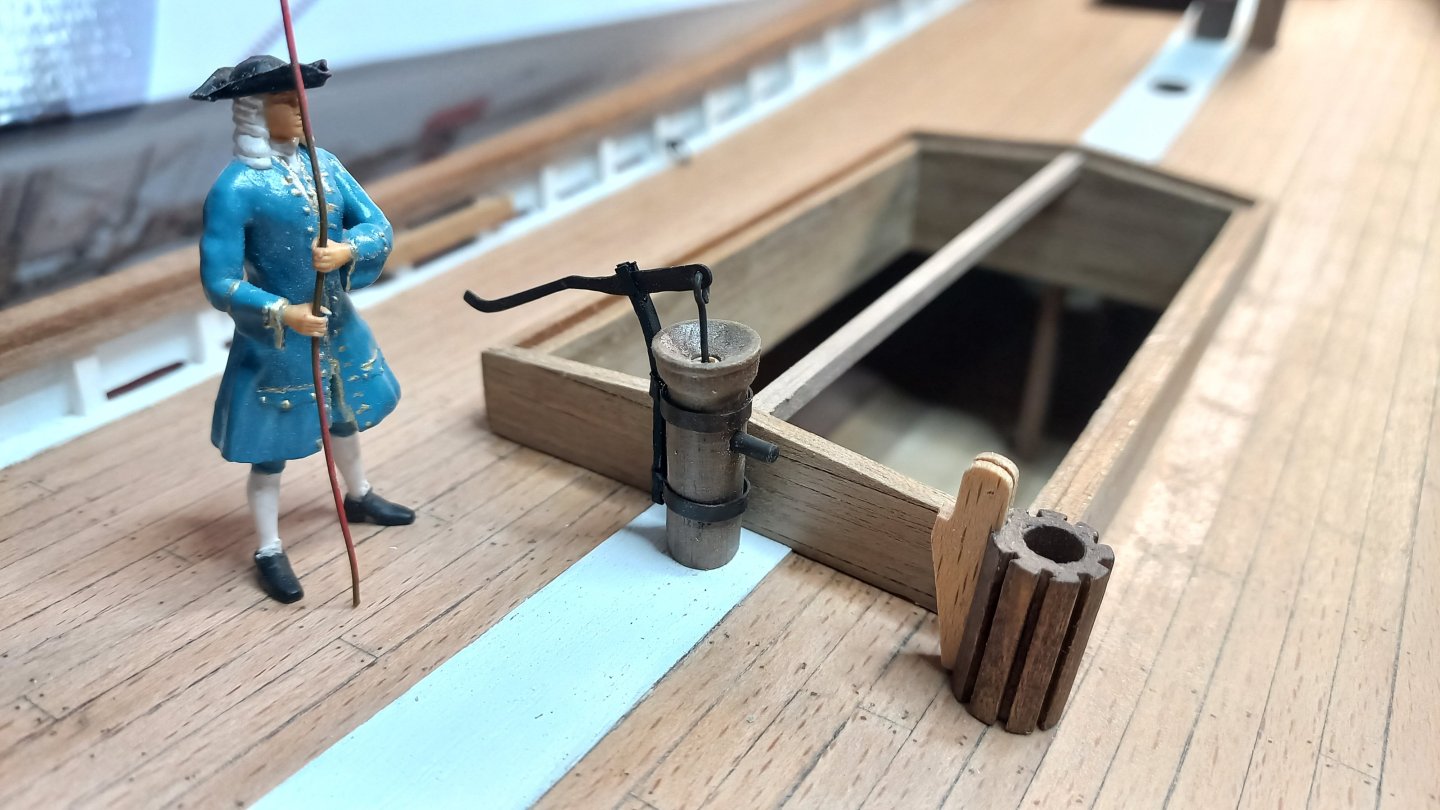
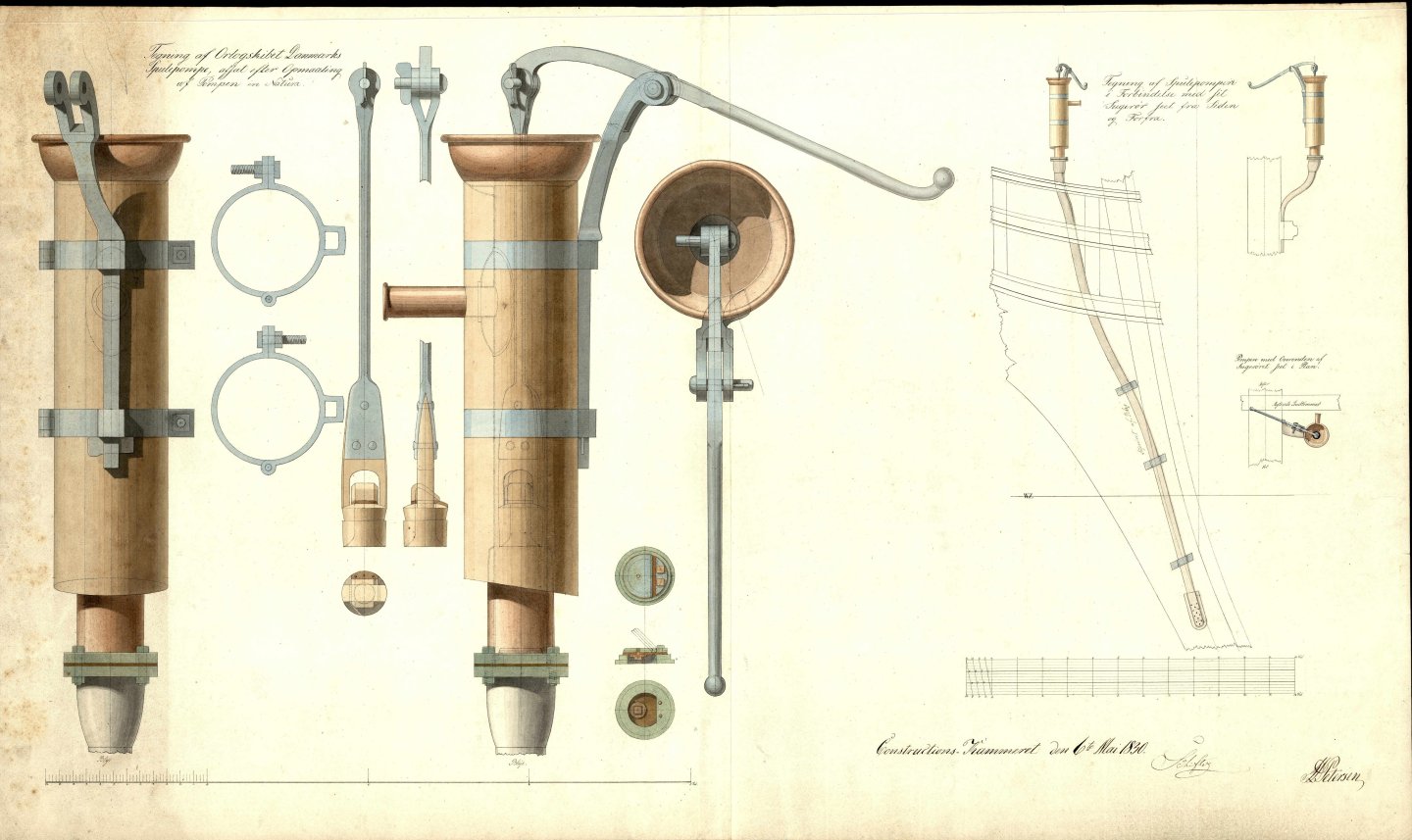

.thumb.jpg.687242cd098594130f0fd9312151c8ce.jpg)
